Virtual Field Trip
from virtual-geology.info

Locality 2.3 - Skrinkle Haven
It is important that you access
this field trip on a laptop or desktop PC. Click on any image to enlarge
it.
Where are we? At this location,
we will continue to explore the Upper Old Red Sandstone and study changes as
the section passes up into the Lower Carboniferous. Study the area in Google
Maps and Streetview - there are some nice views from the coast path, and
panoramas on the beach.
The strata are vertical to slightly
overturned, which is ideal for our purposes of measuring thicknesses and observing
sedimentary facies through a thick sequence.
Handout: refer to the handout
for today, which contains essential diagrams and information. Don't forget to
use the information in the Field Guide too. Both are available in Course Resources.
Tasks: See today's handout.
At this location, most of the information is in the images, and in your accurate
observation of them. There's a lot to see and do at this location, and we usually
spend most of a day here.
|
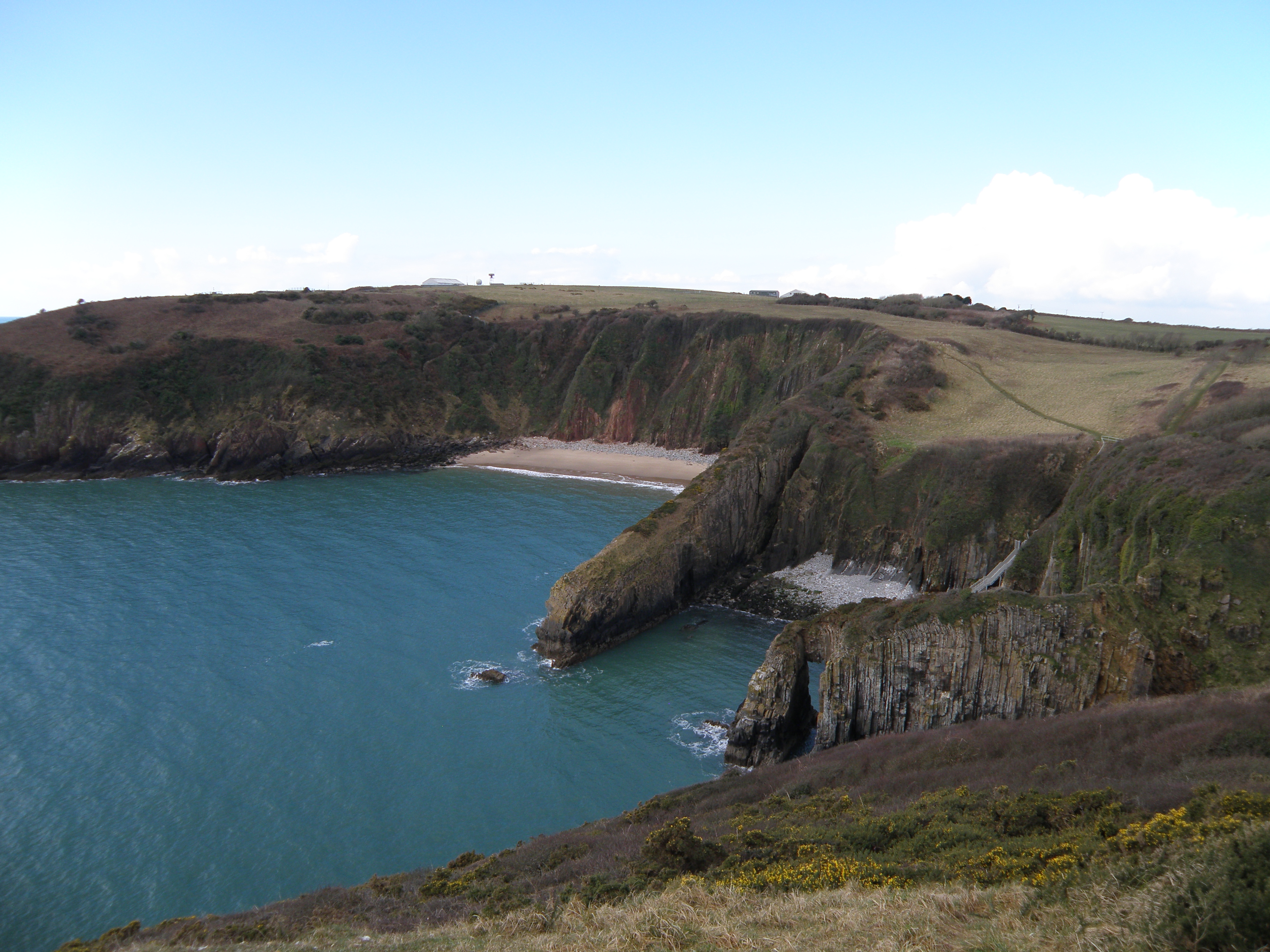
A1. View of the whole section at Skrinkle Haven from the Pembrokeshire
Coast Path. The strata are near-vertical and young towards the north (right).
In the centre is the west cove; on the right is the middle cove, behind
the natural arch. Access is via the metal steps to the beach.
|
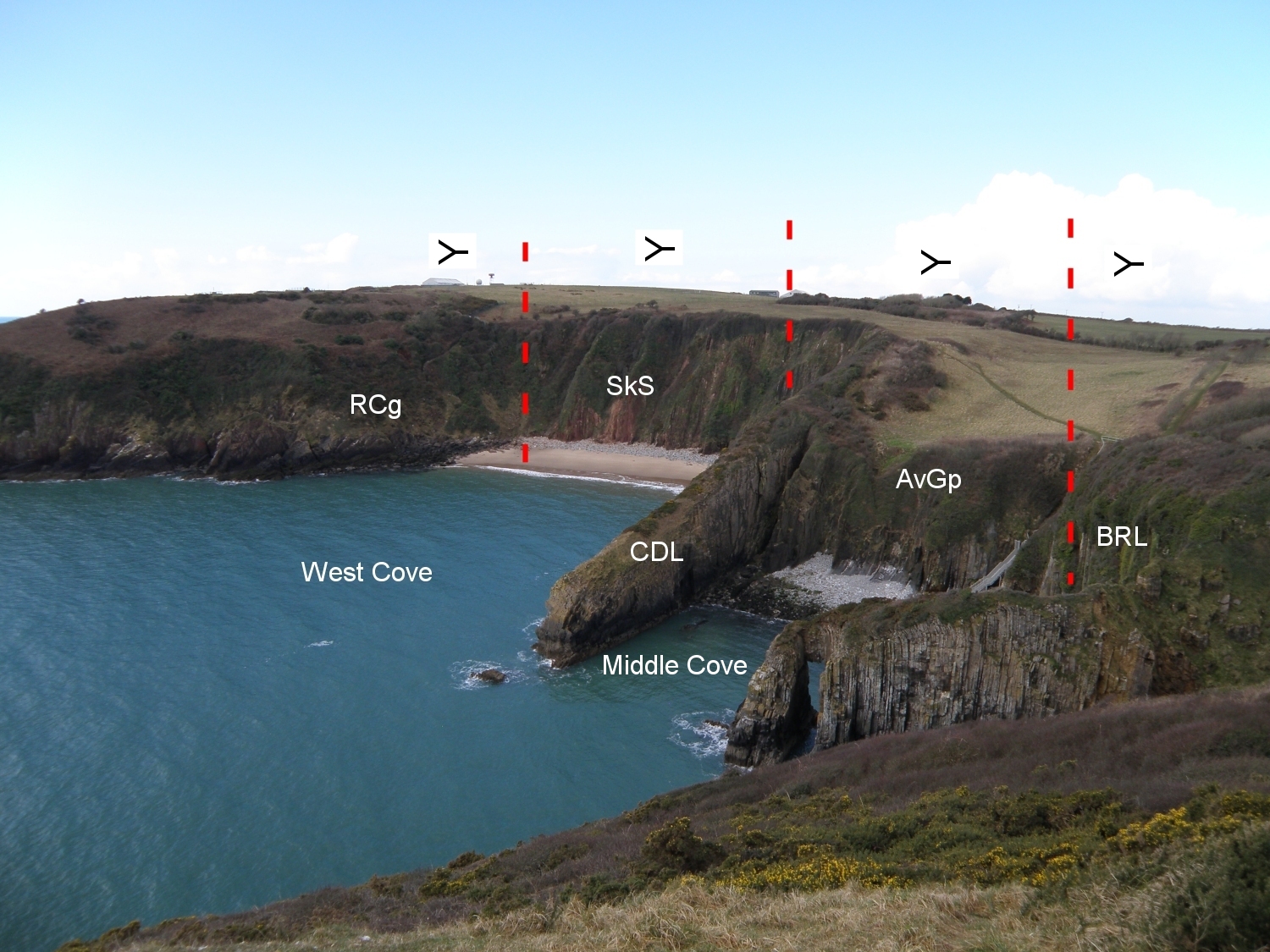
A2. RCg Ridgeway Conglomerate (Lower ORS); SkS Skrinkle Sandstones (Upper
ORS); AvGp Avon Group (Lower Carboniferous); CDL Church Doors Limestone
(a unit within the AvGp); BRL Black Rock Limestone - the lowest unit of
the Pembroke Limestone Group (Lower Carboniferous) |
|
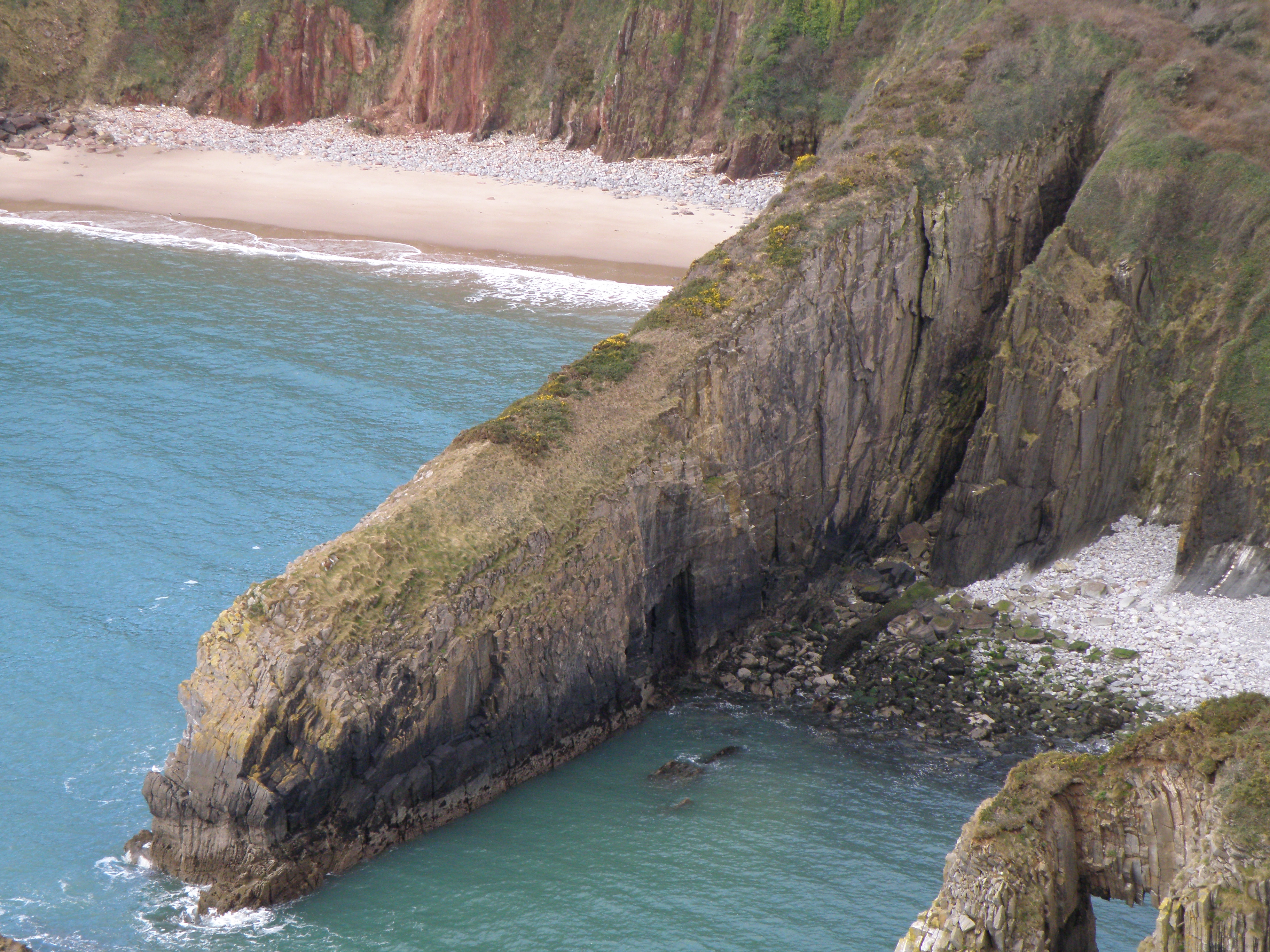
B1 Note the prominent ridge and headland formed by the resistant Church
Doors Limestone. This presents a natural barrier to geologists! At very
low spring tides, we can walk around the headland.
|
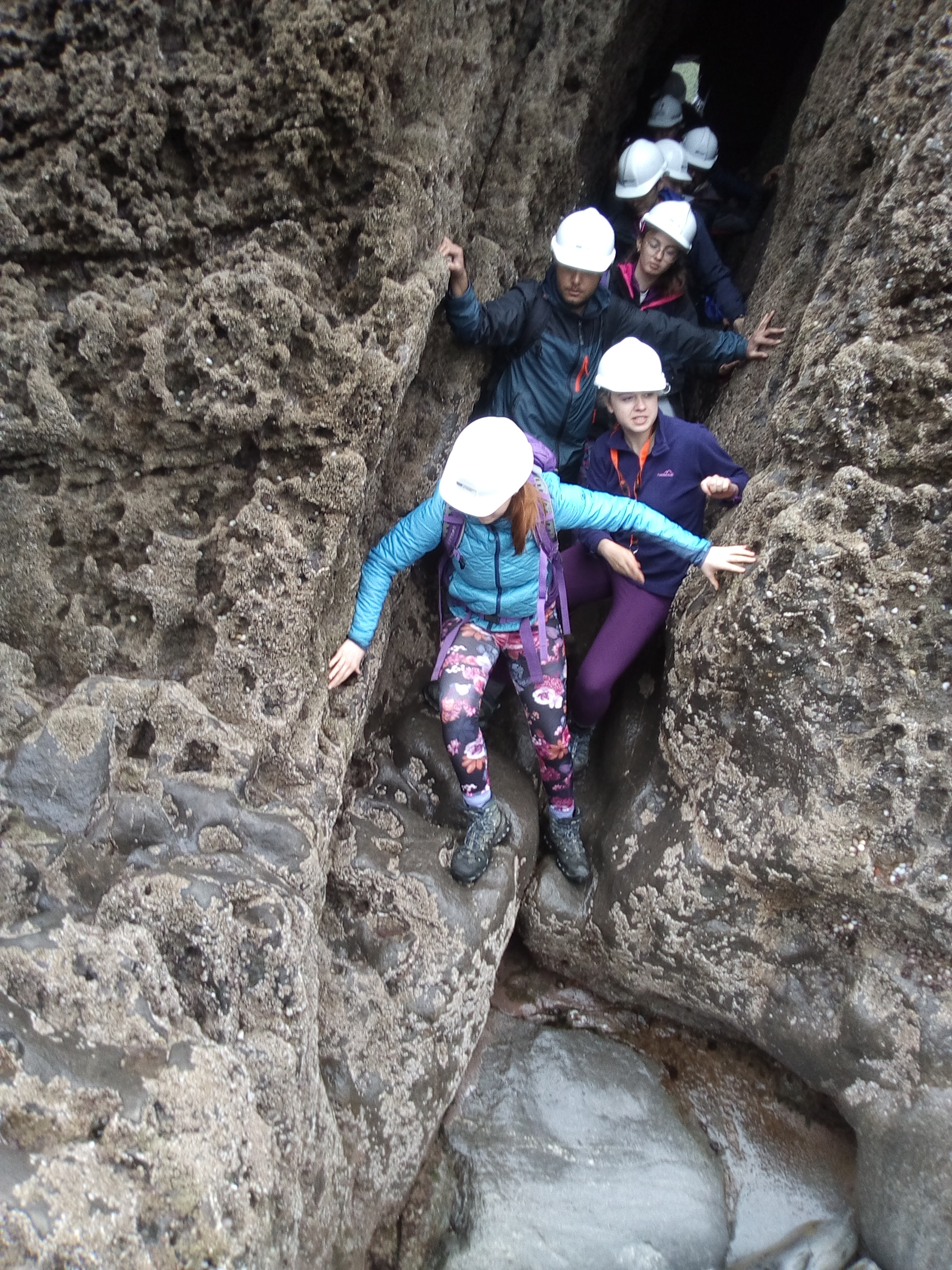
B2. Normally, however, when the tide has gone down sufficiently, we take
an interesting short cut through a sea cave through the CDL, from the
middle cove, and emerge in the west cove, as seen here. If you visit this
location for real, make sure you have accurate tide information.
|
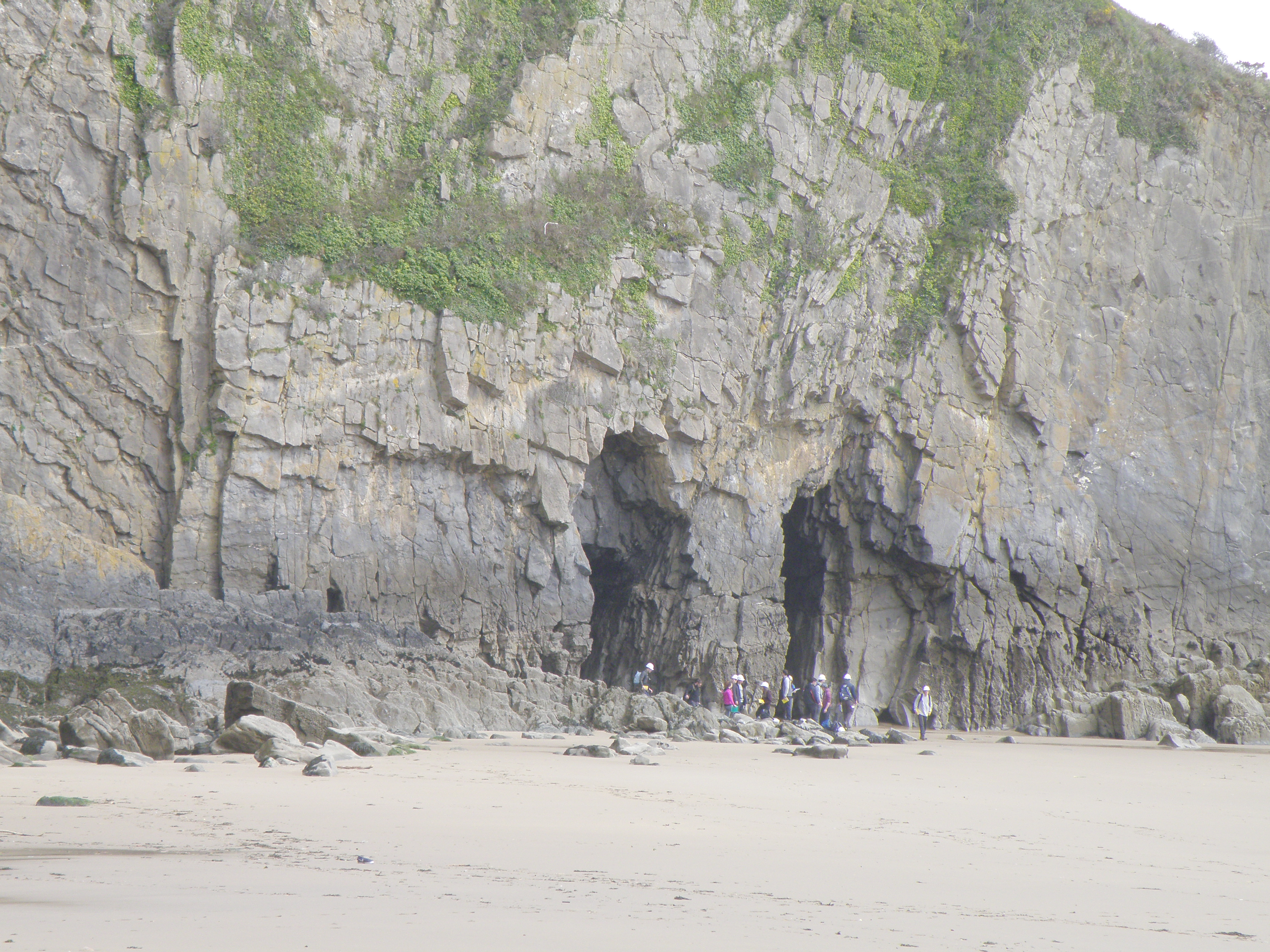 B3. These are the Church Doors - sea caves eroded in the south side (base)
of the vertical Church Doors Limestone ridge.
B3. These are the Church Doors - sea caves eroded in the south side (base)
of the vertical Church Doors Limestone ridge.
|
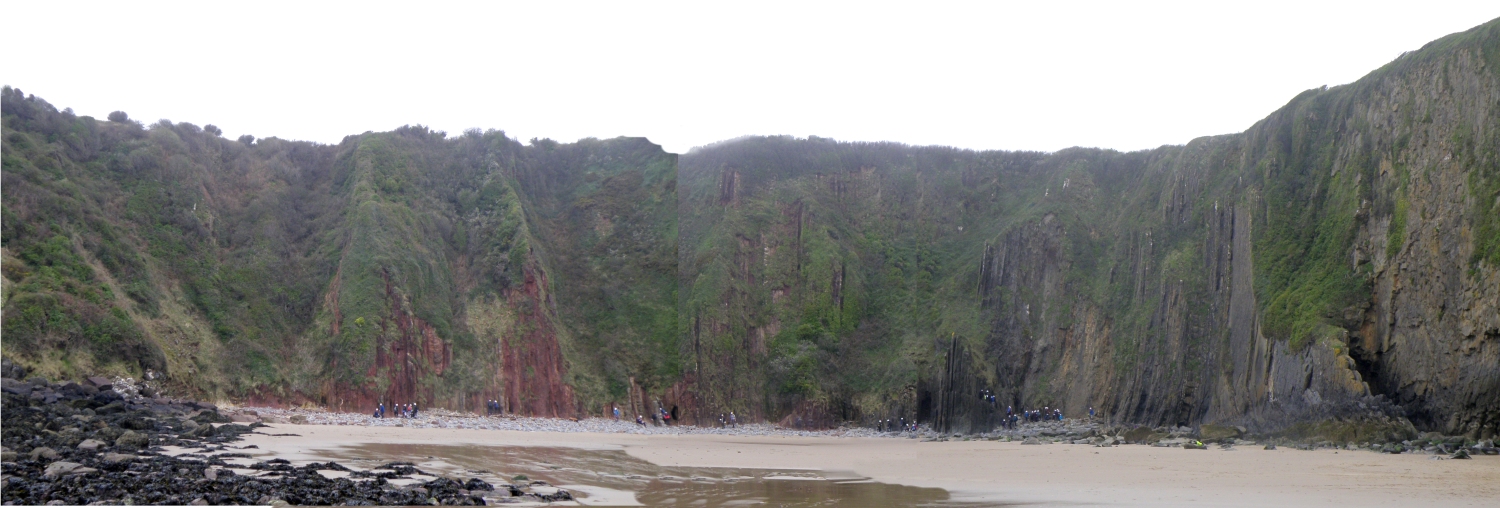
C1. Panorama of the west cove. The top of the Ridgeway Conglomerate is in
the rubbly slope on the left,
and its contact with the overlying Skrinkle Sandstones is obscured by boulders, |
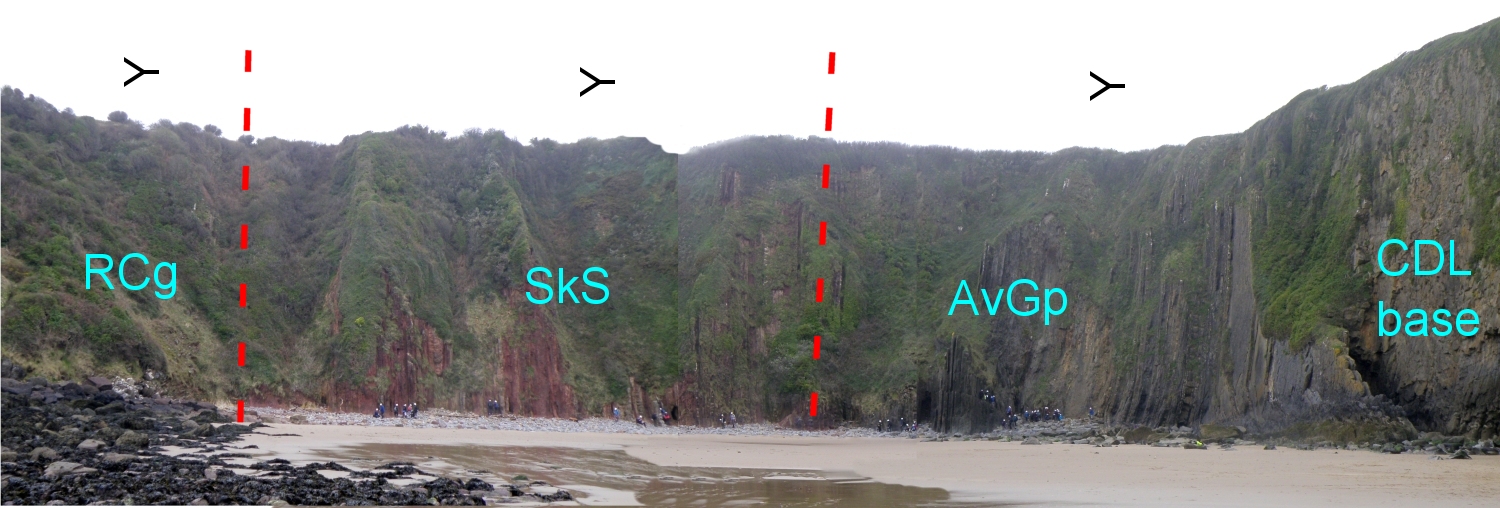
C2. Annotated panorama - same abbreviations as photo A2. Vertical to slightly
overturned dips; younging to the right, as shown by symbols. Note the colour
change in the passage from SkS to AvGp. |
The aim of this exercise is to synthesize
information of a variety of different types - for example lithology, thickness
and geometry of sedimentary units, sedimentary structures and palaeocurrents,
fossils and trace fossils (or absence thereof), lateral and vertical changes
etc. From these observations, you should be able to attempt interpretations
of the the processes and environments involved in the formation of the section.
This integrated approach, using all available sources of information, is very
important in sedimentology. You have seen a similar section in a practical earlier
this semester.
Identifying and interpreting sedimentary
structures, fossils and trace fossils is an important part of this exercise.
If you need to brush up on these, the best sources are the appropriate chapters
in the set books.

Field evidence
Use the photographs below of outcrops
and samples to complete tasks described in the handout for today. The strata
dip steeply to the south. Some photographs show the true dip; others are taken
parallel to bedding, so that sedimentary features are more obvious. Pay particular
attention to field relationships - contacts between units, how units change
as you trace them laterally, etc.
Old Red Sandstone
|
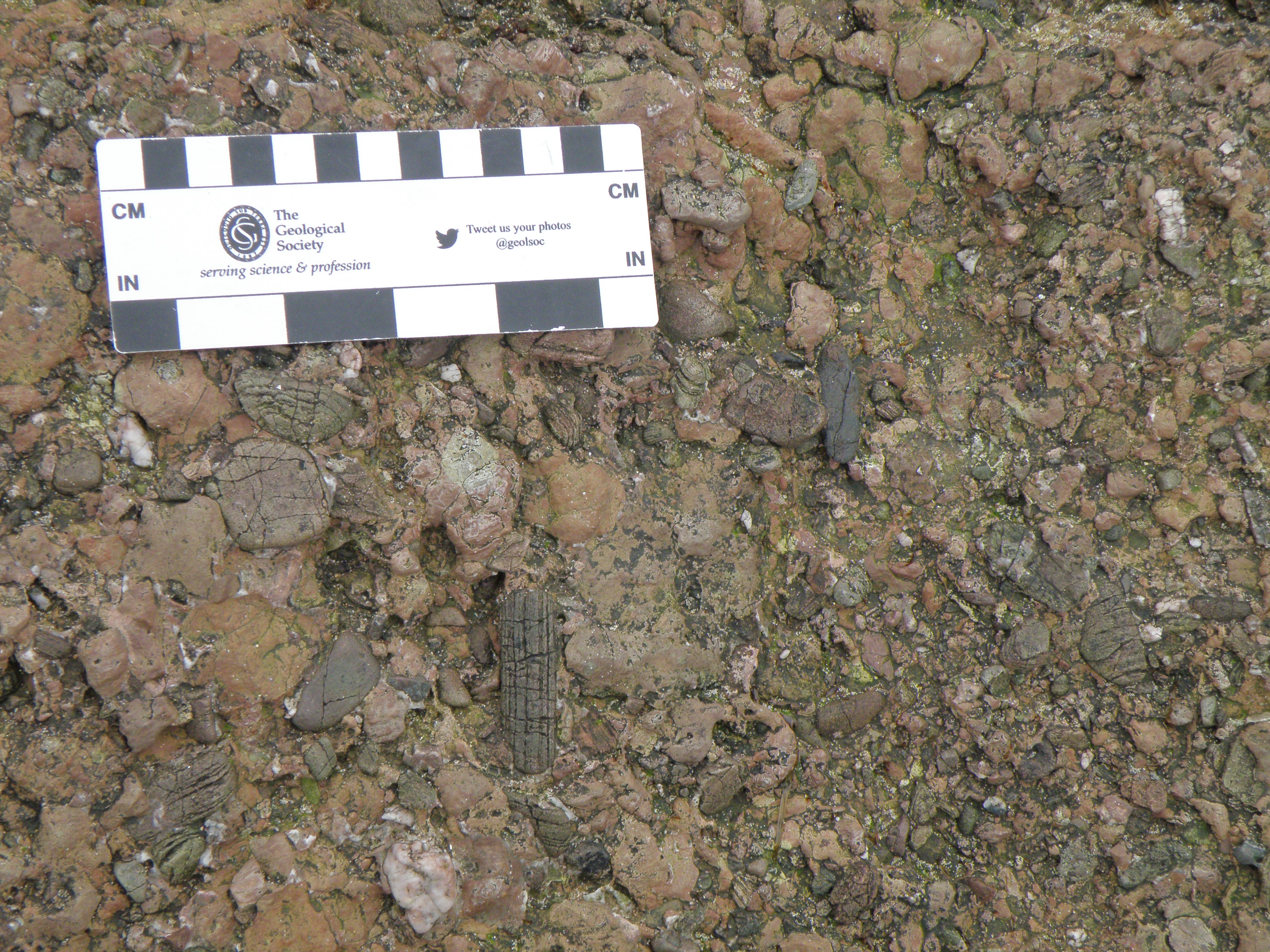
D. Top of the Ridgeway Conglomerate.
Compare it with the
outcrops you saw at Freshwater West.
|
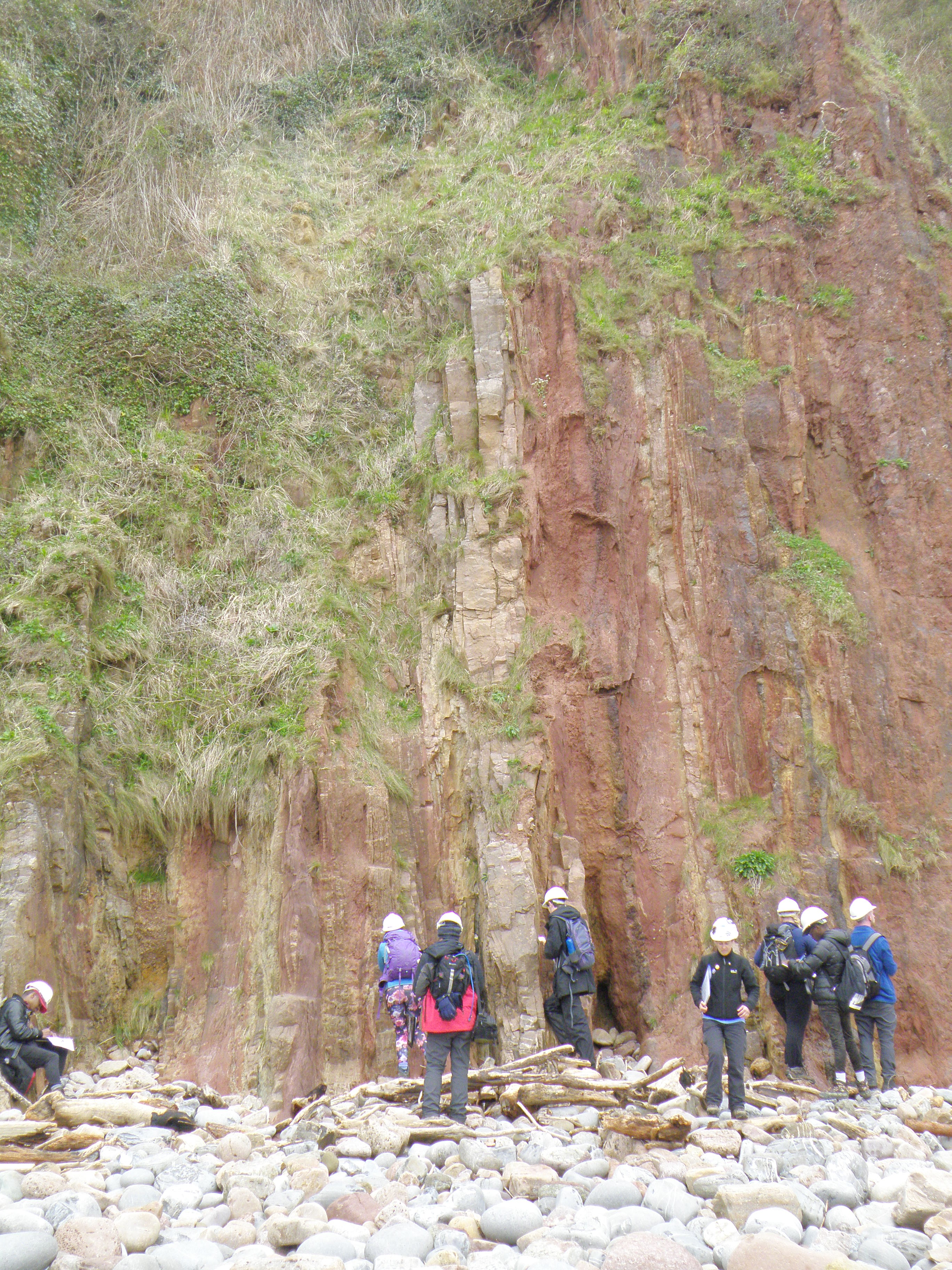
E. Skrinkle Sandstones - zoom in to see detail. The section includes thin
calcretes, and some of the harder beds are conglomeratic.
|
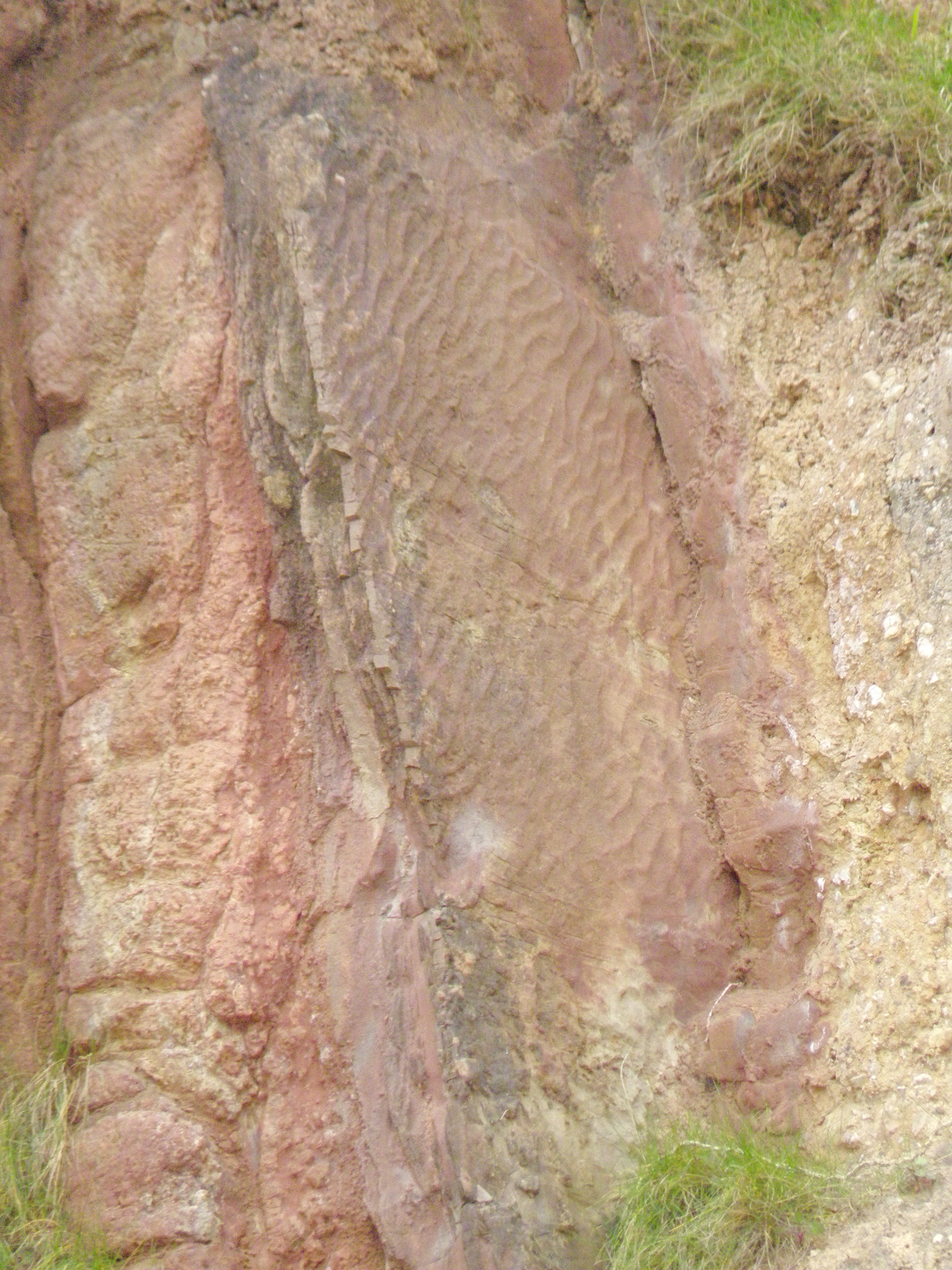
F. Bedding surface near the top of the Skrinkle Sandstones. Fossils are
absent from these rocks, except near the top, where Lingula and small
bivalves occur. |
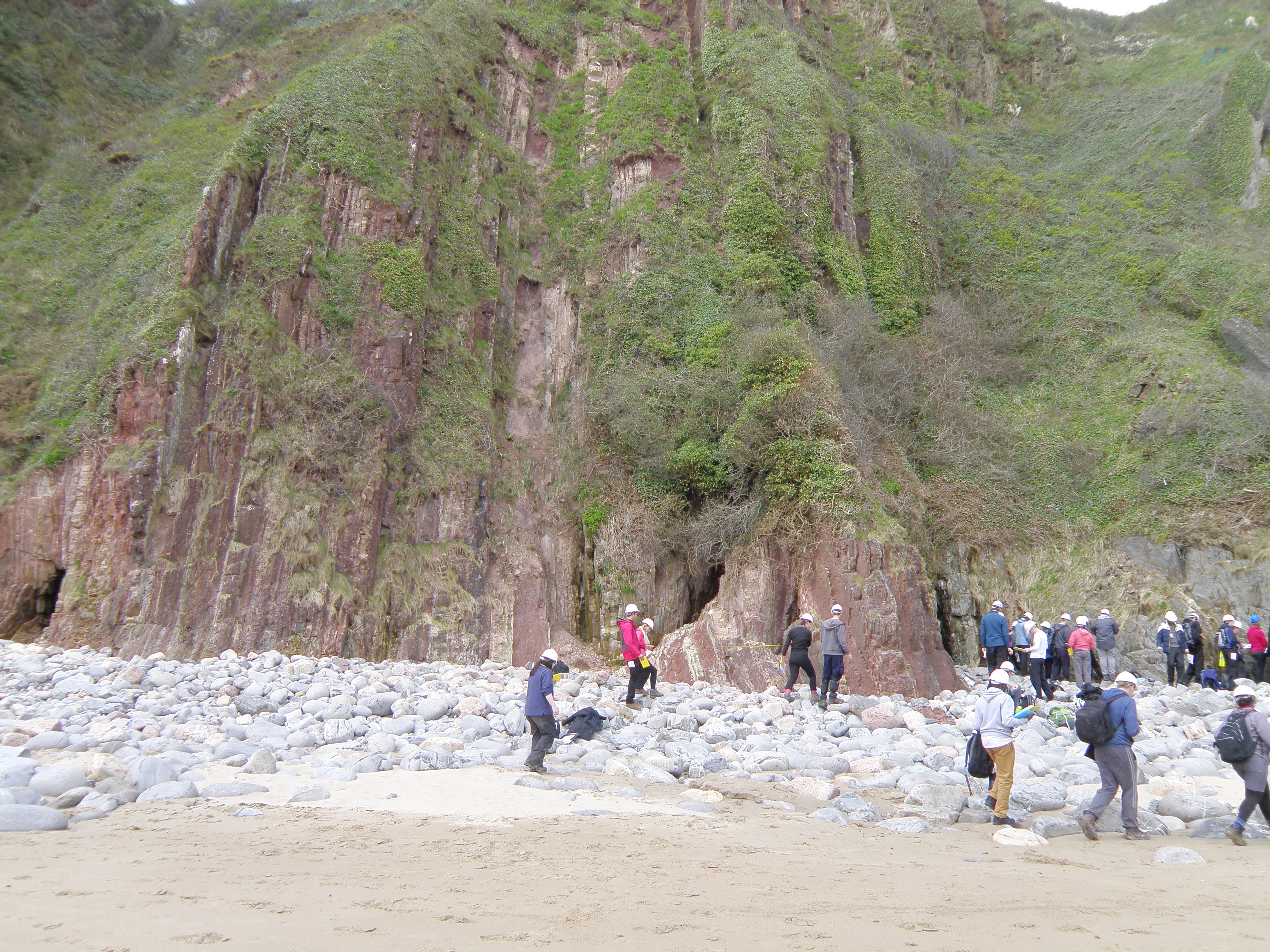
G. Towards the top of the Skrinkle Sandstones - note the colour change. |
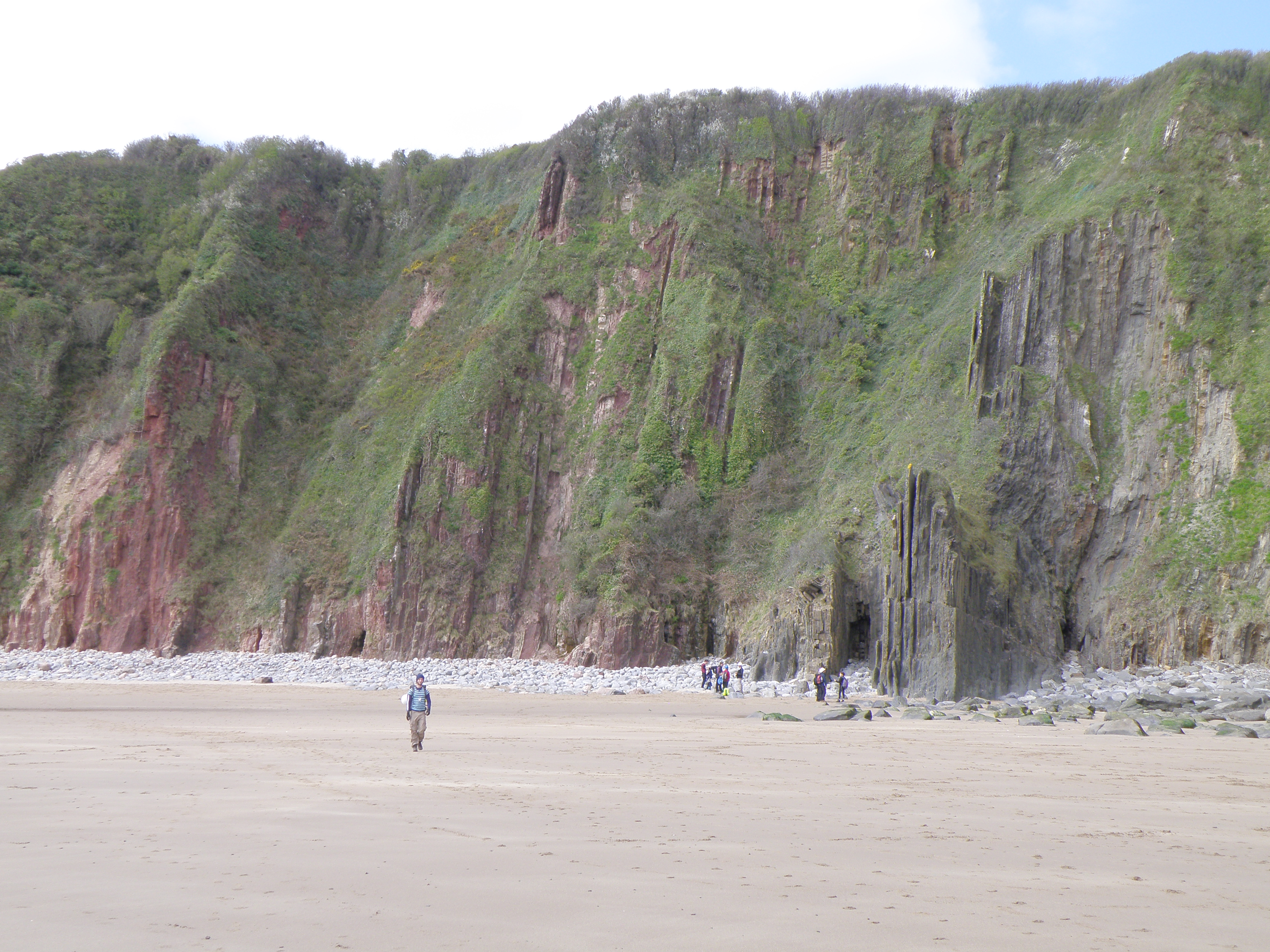
H. Passage from Skrinkle Sandstones to Avon Group. There is a gradual
change in colour - give a likely chemical explanation for this. What might
this indicate about changing environmental conditions?
|
|
Avon Group (AvGp)
Photos I to K8 were all taken in
the strata exposed in the north end of the west cove, in the two recesses at
the right-hand side of photo H.
|
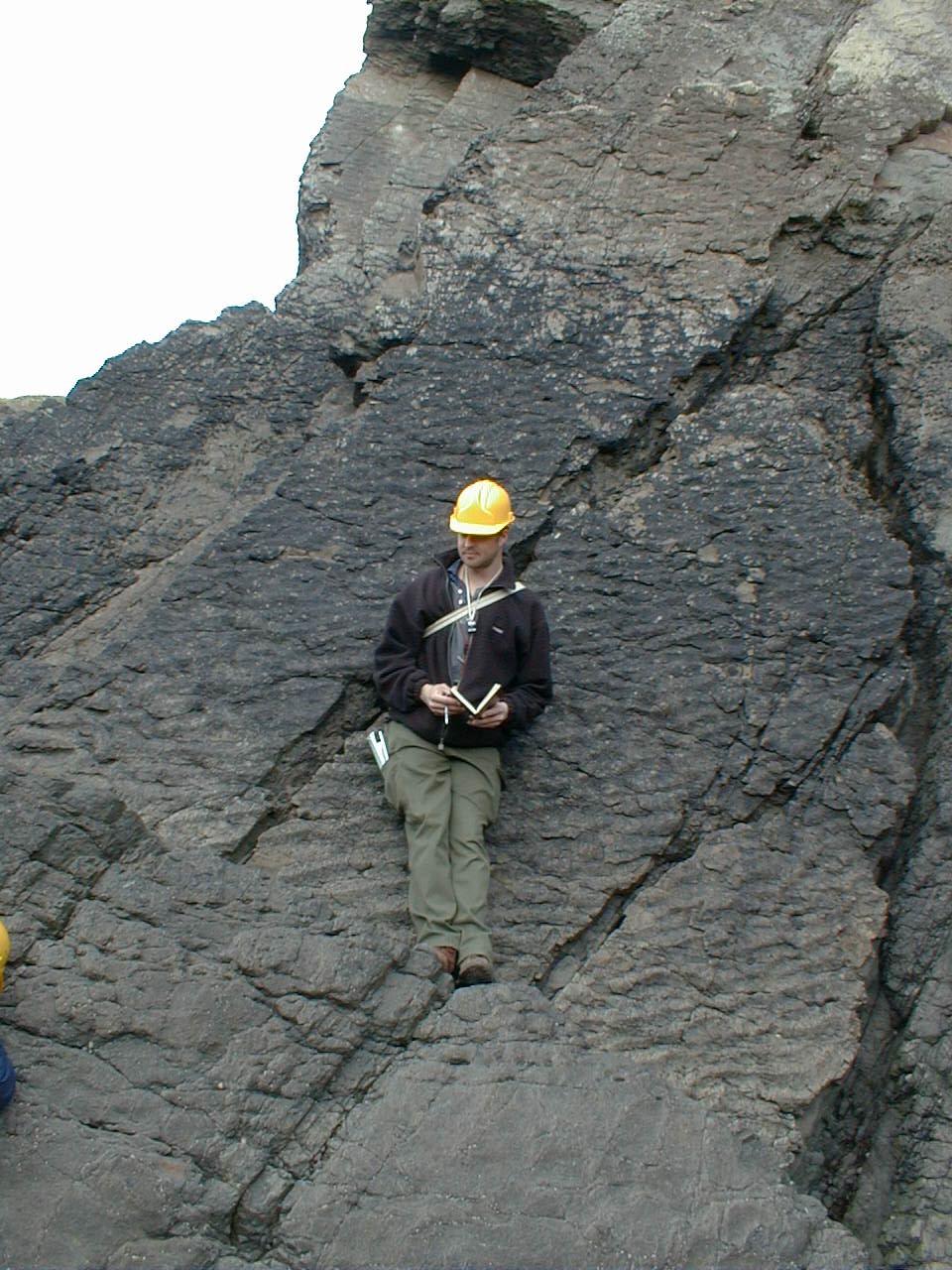
I. Structures on a bedding surface
|
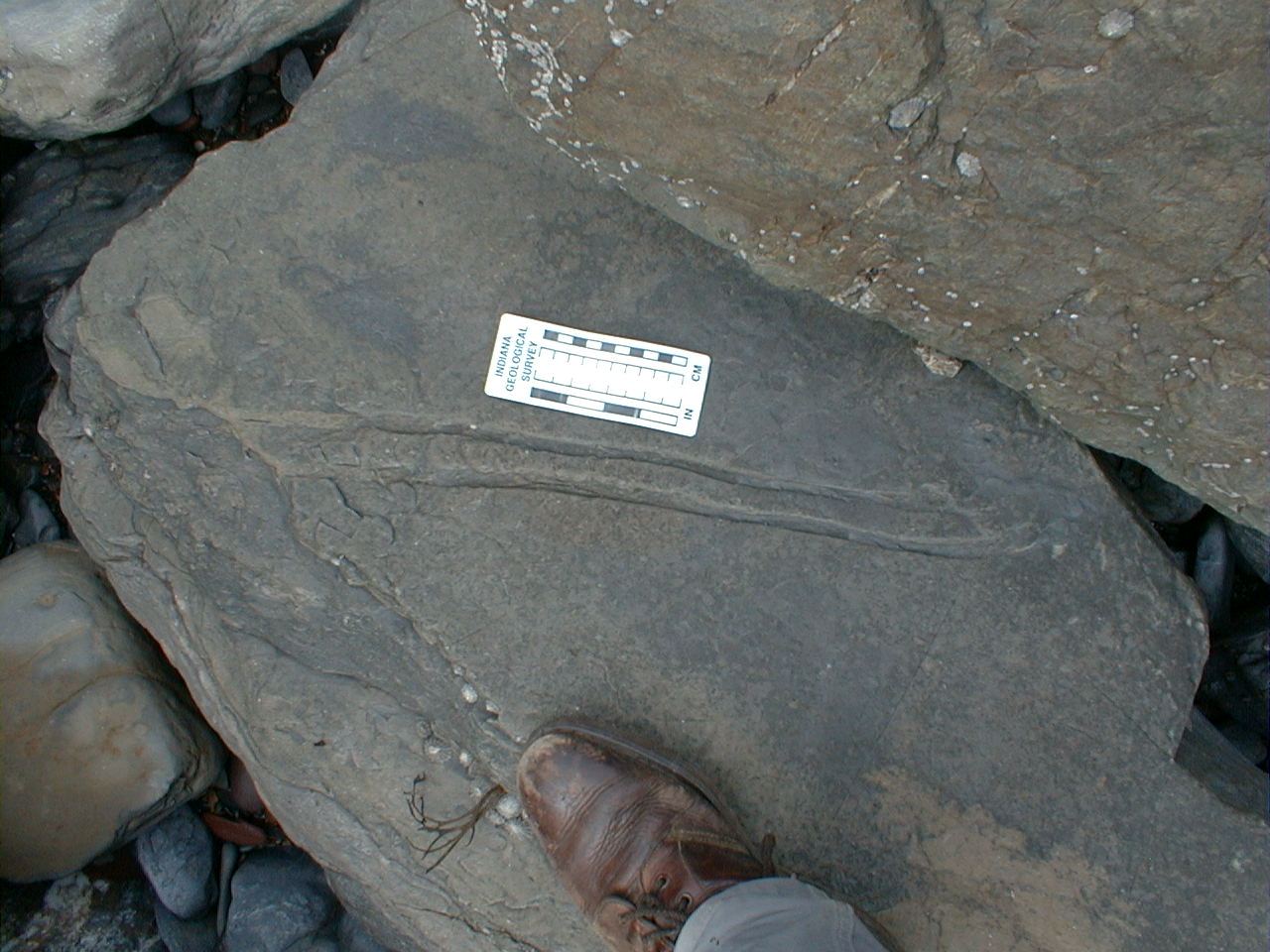
J. Trace fossil on a bedding surface
|
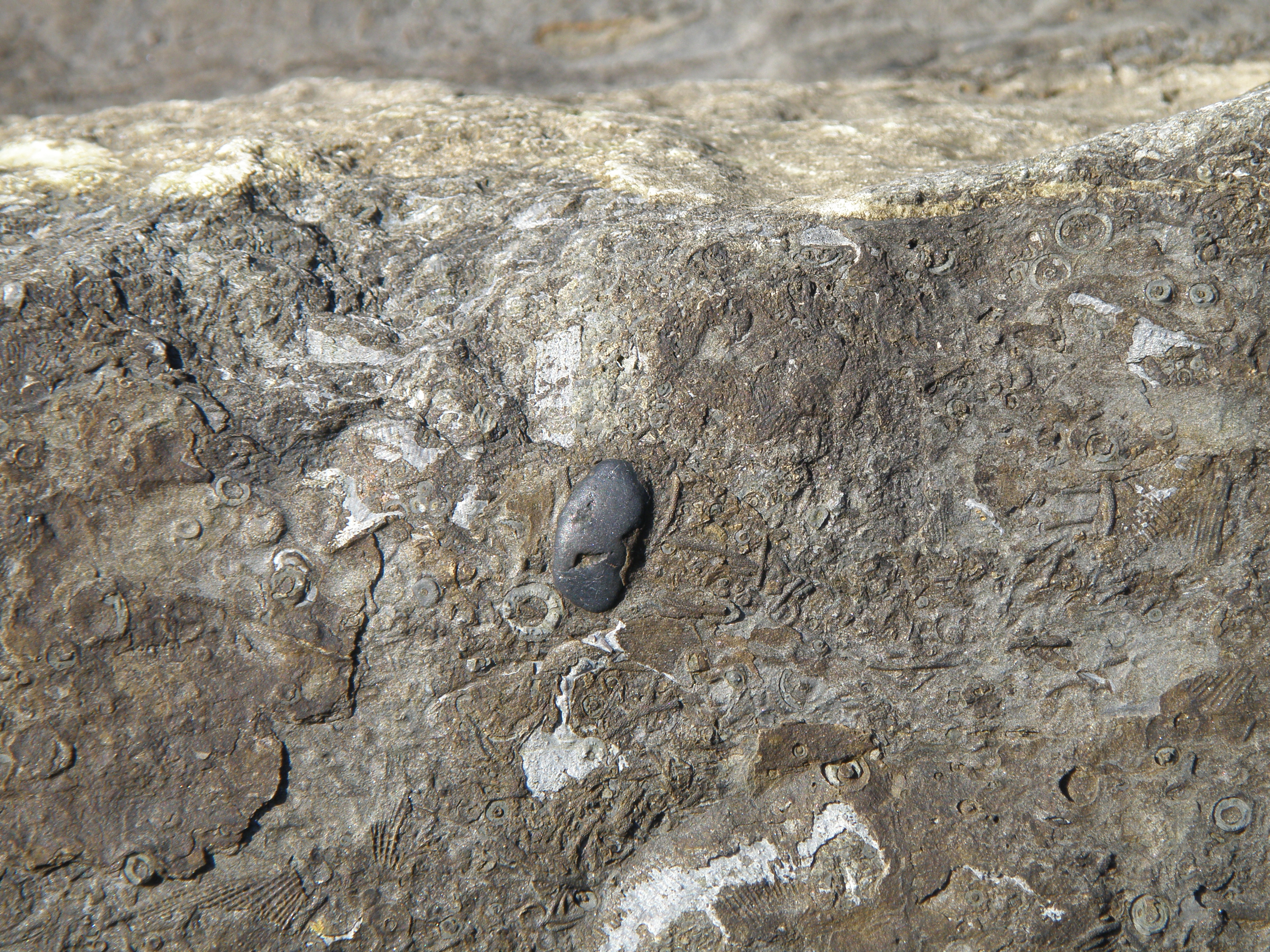
K1. In photos K1 to K8, attempt to identify the fossils present. Comment
on whether they are whole or fragmented, in life position or transported.
How did each of these fossil groups live, and what does that tell us about
conditions in the sedimentary environment? |
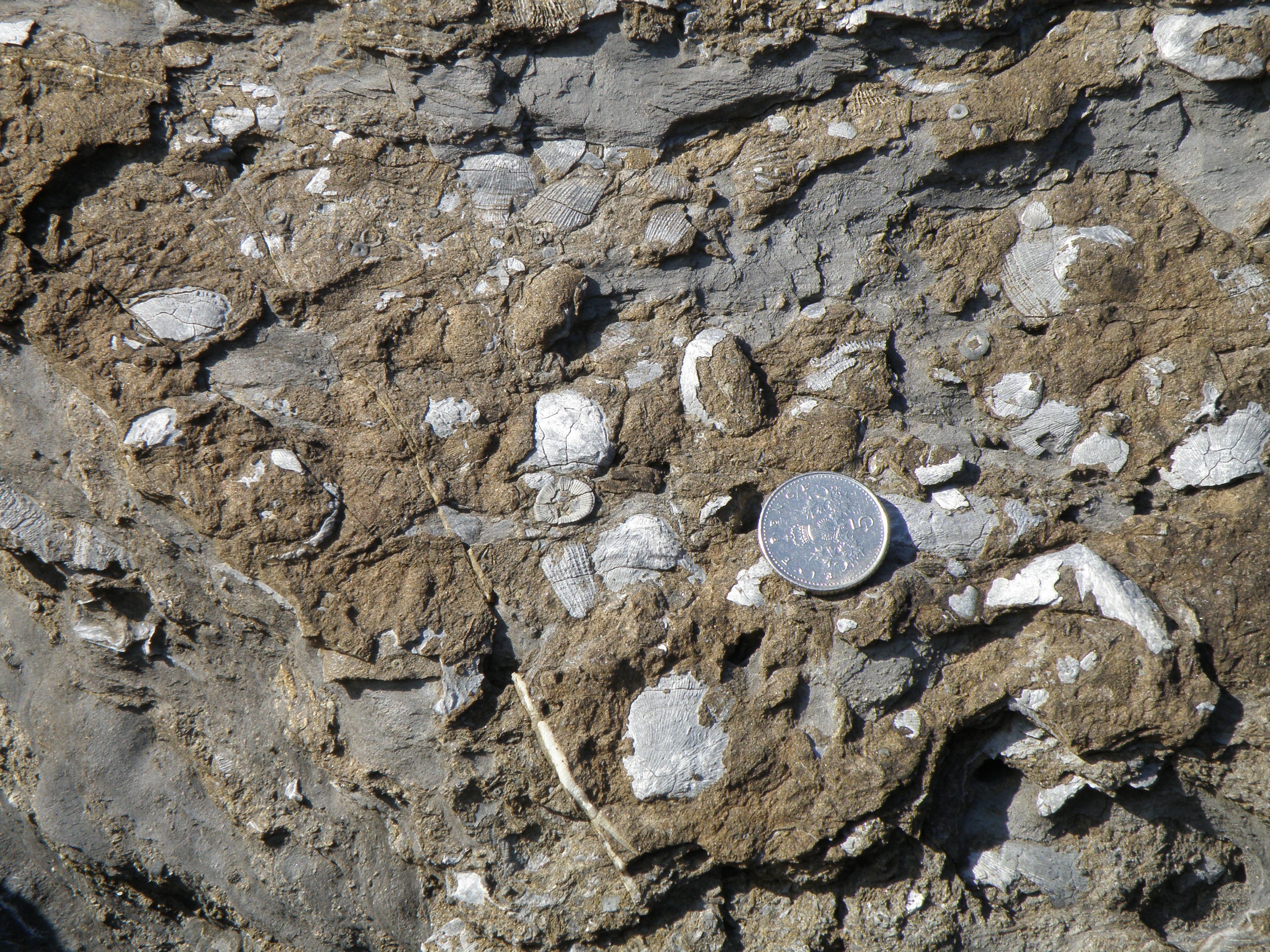
K2. Several different fossil types. |
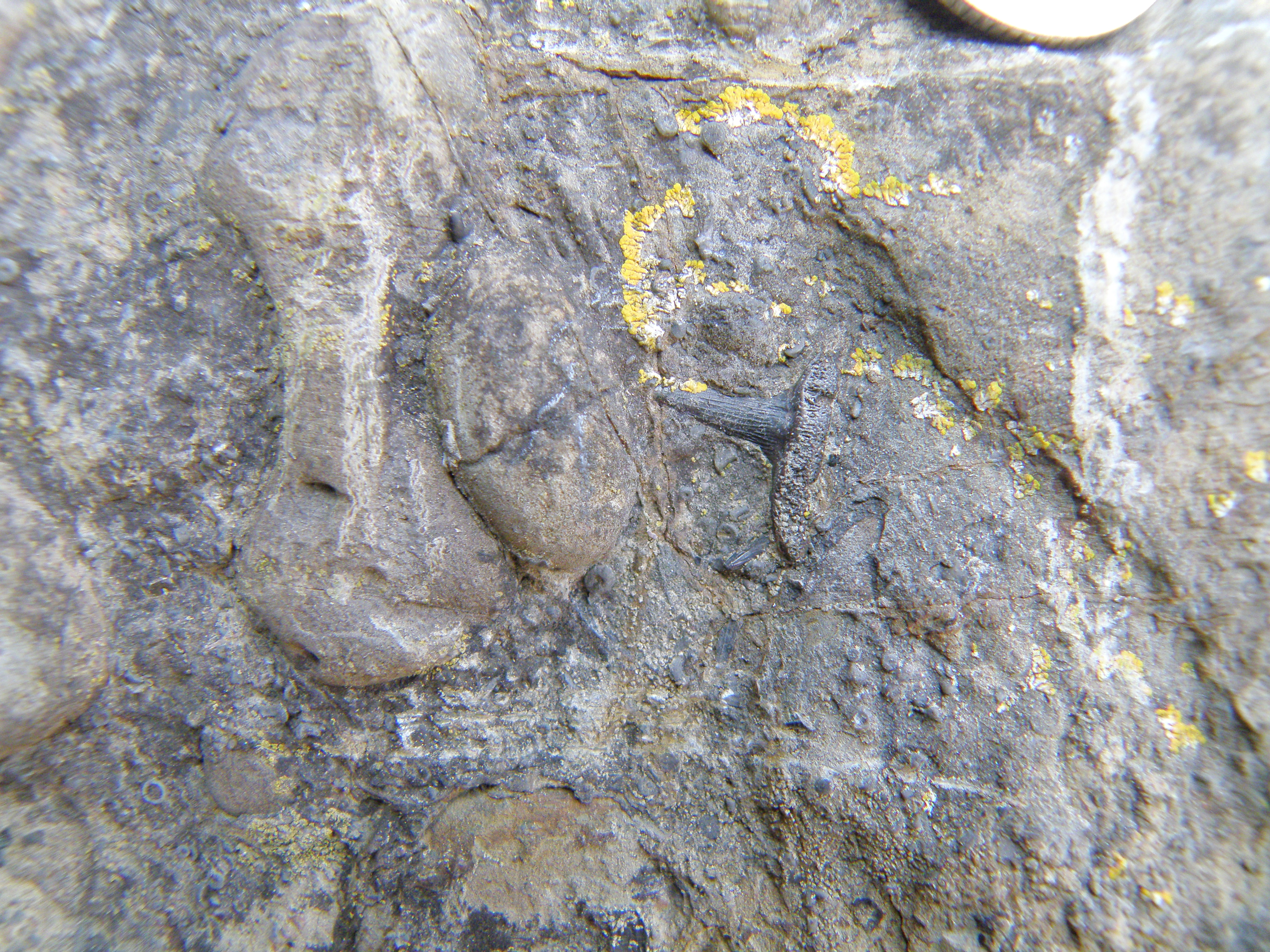
K3. The familiar shape just right of centre has acquired a black phosphate
coating on the sea floor; this is seen on fossil fragments in other photos.
|
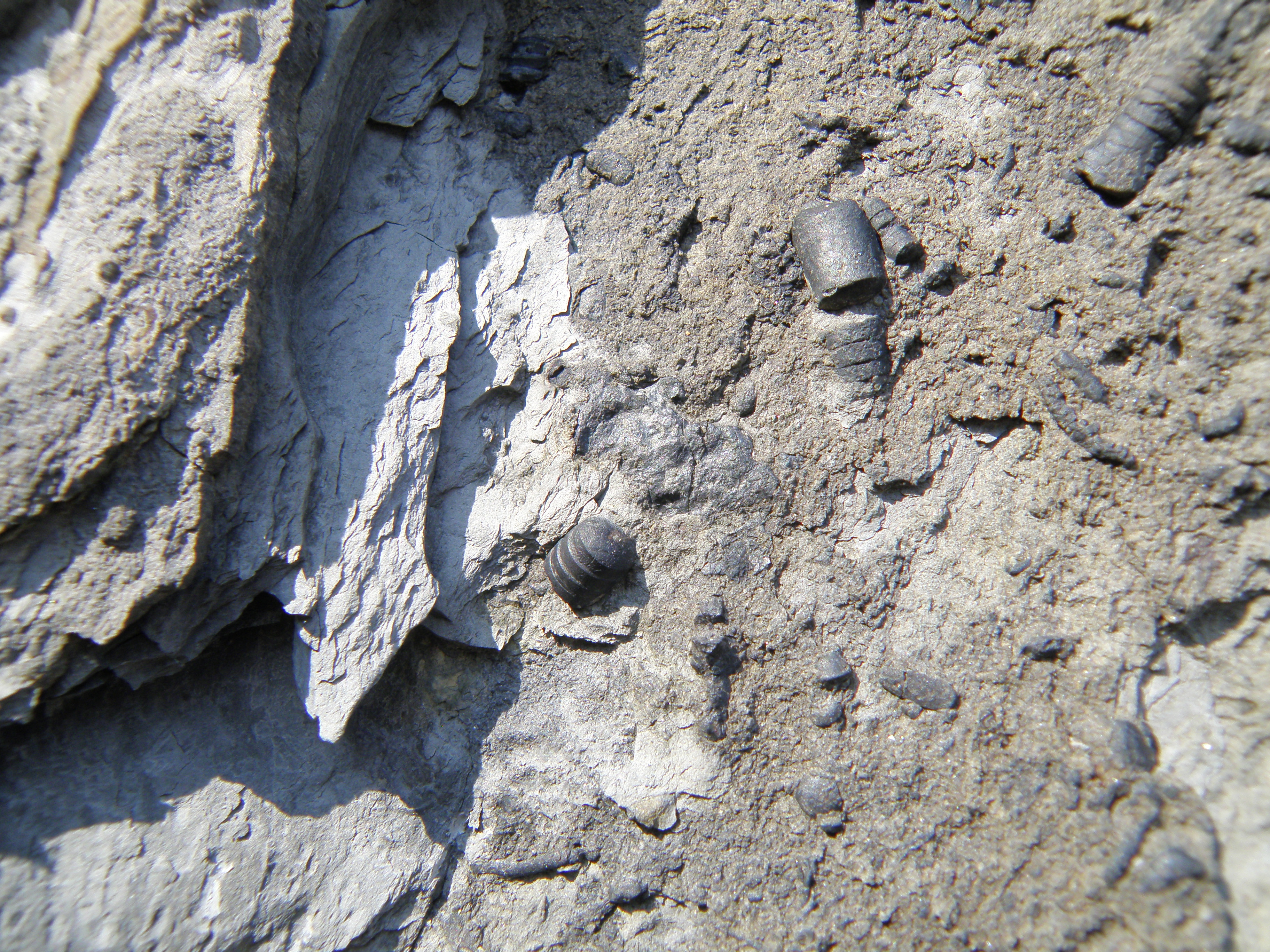
K4. These may be unfamiliar - they are small orthocone nautiloids,
about 10mm in diameter, which were common in the Palaeozoic. Find out a
bit more about them and how they lived. They have also acquired a phosphate
coating - how does this happen? |
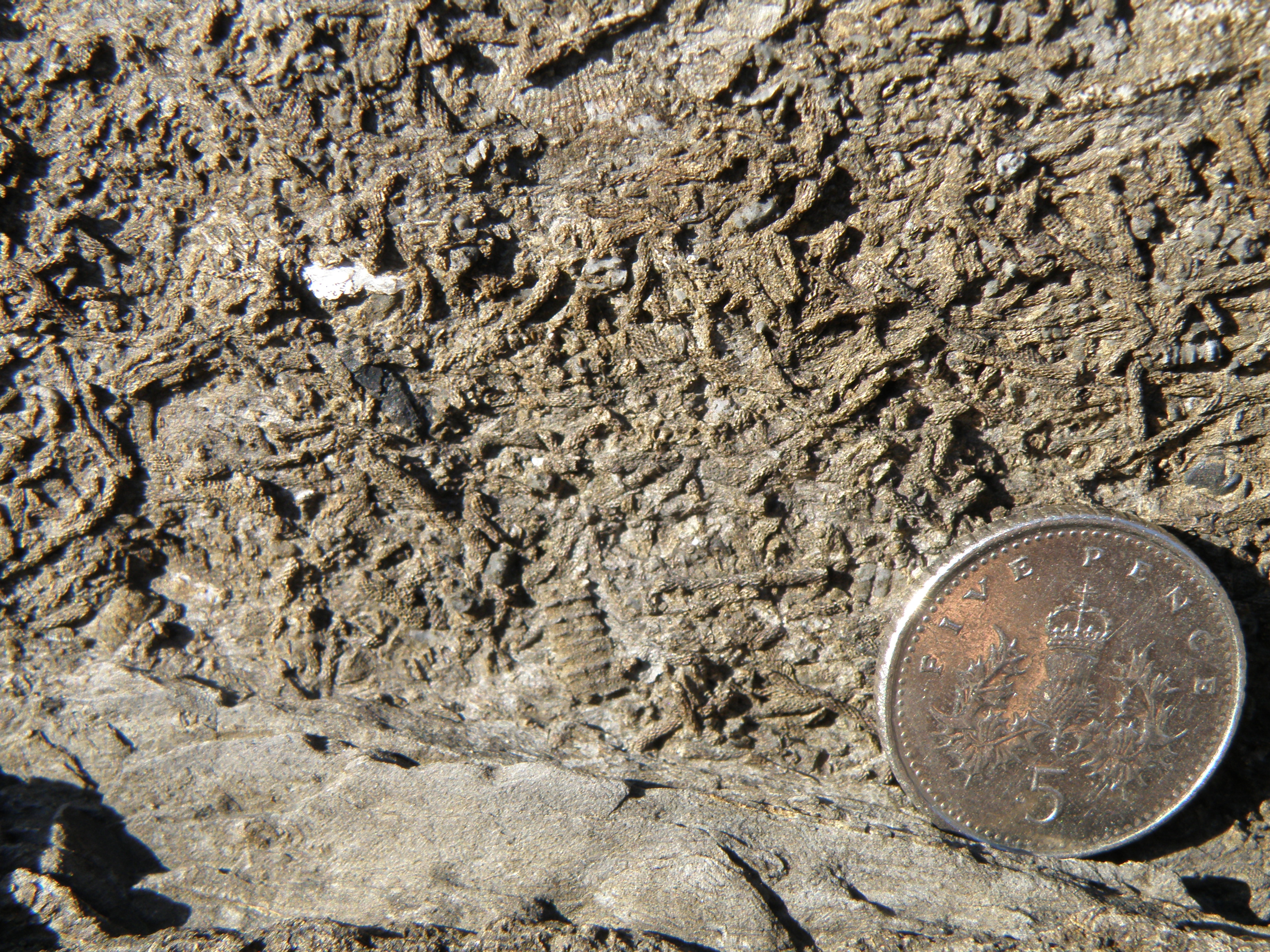
K5. The stick-like fossils here are close relatives of the network structures
in the next two photos; what are they? |
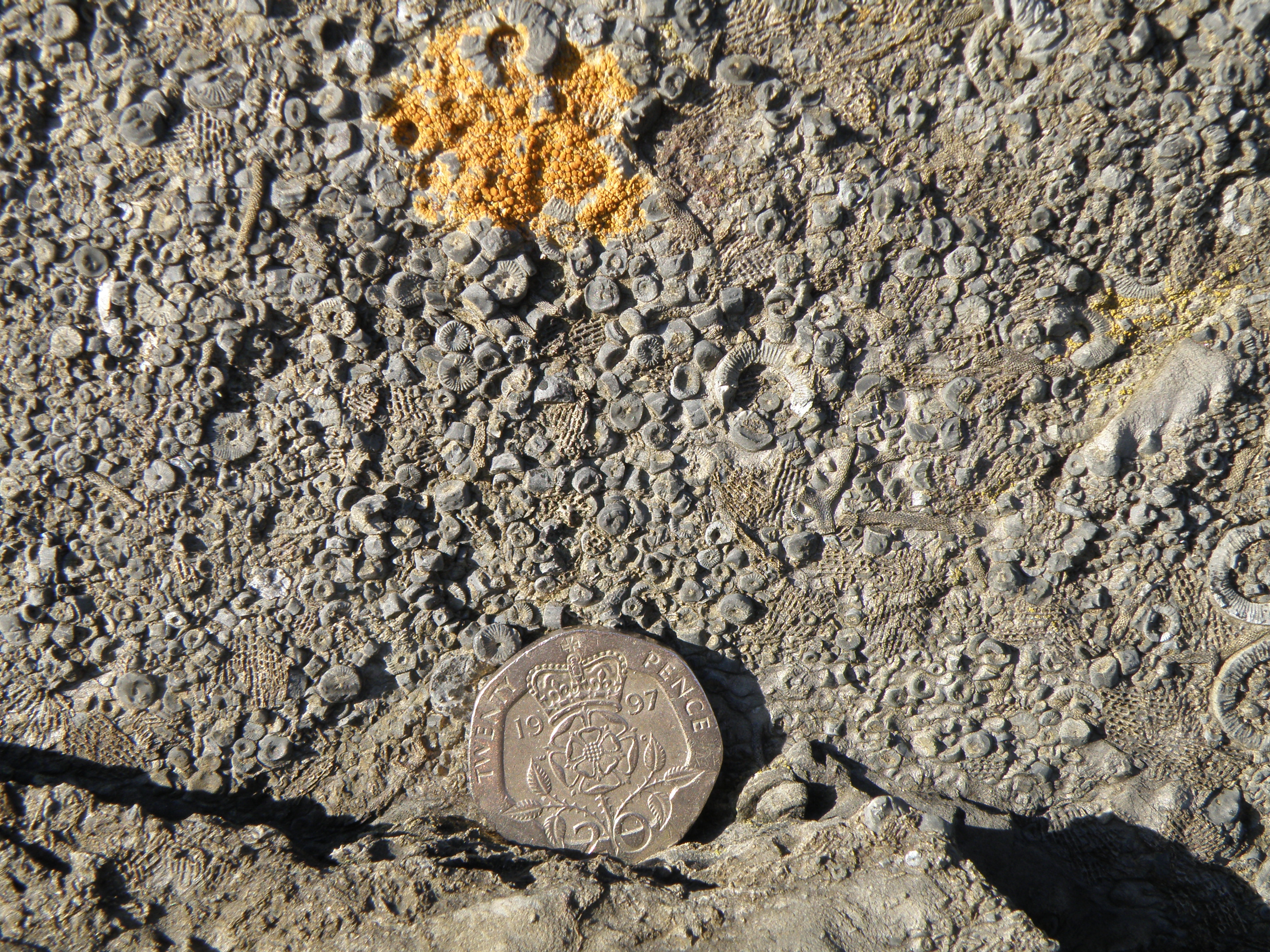
K6. Pay particular attention to the circular fossils here; what are they,
and what do they tell us about salinity? |
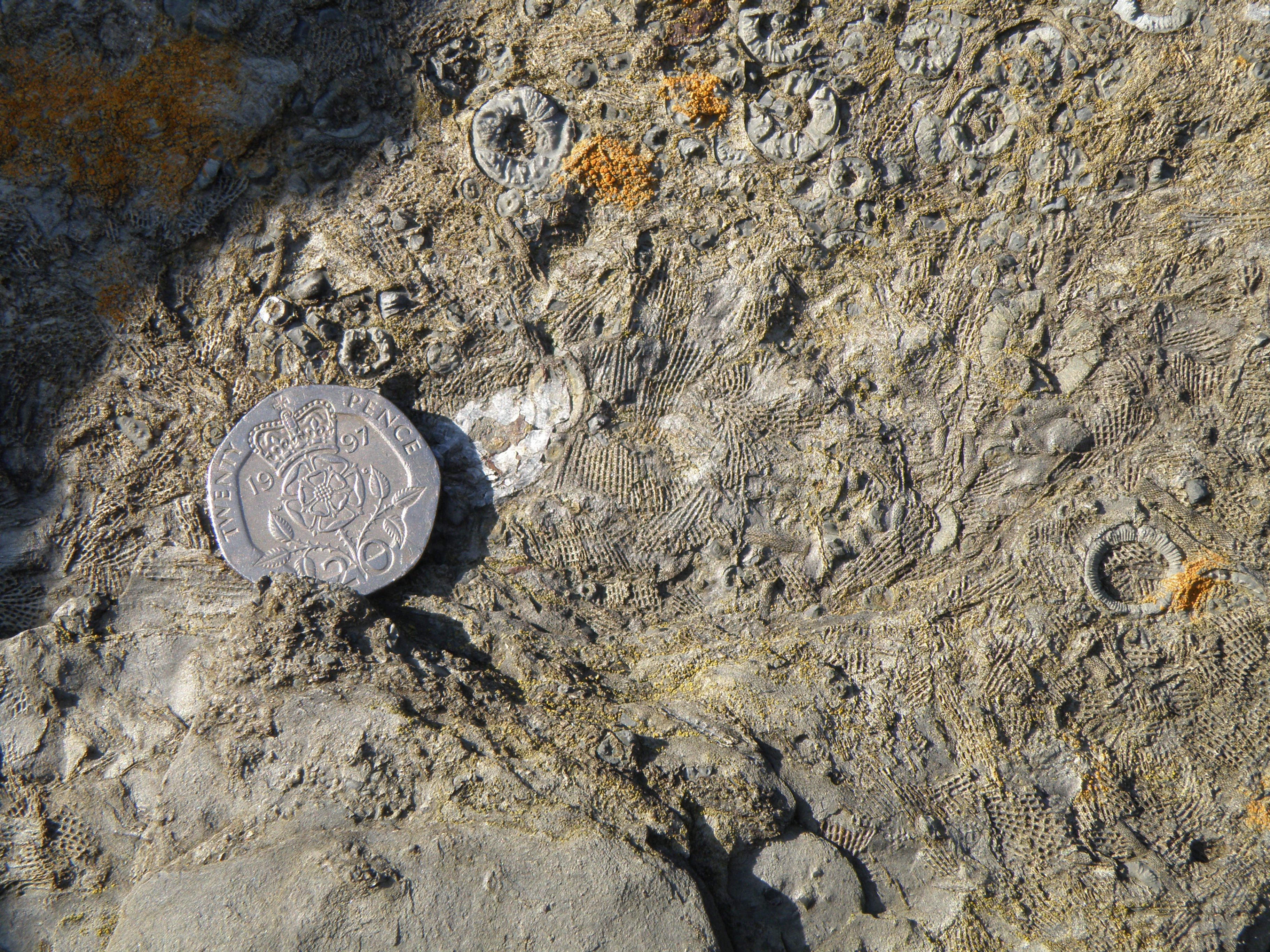
K7. See caption for K5. |
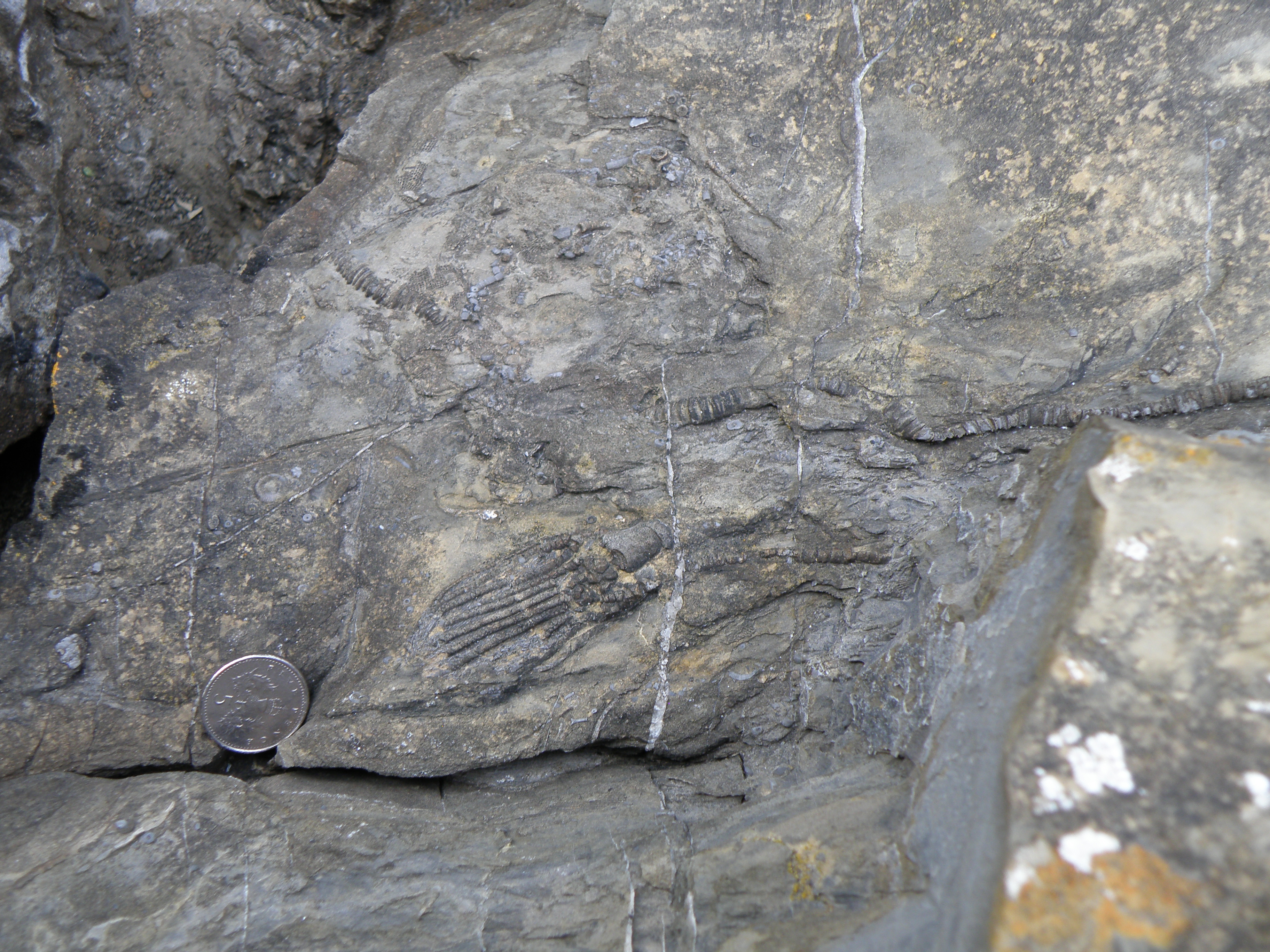
K8. Most of this organism is well preserved, but it has
been cut by very small faults marked by calcite veins.
|
.
.
|
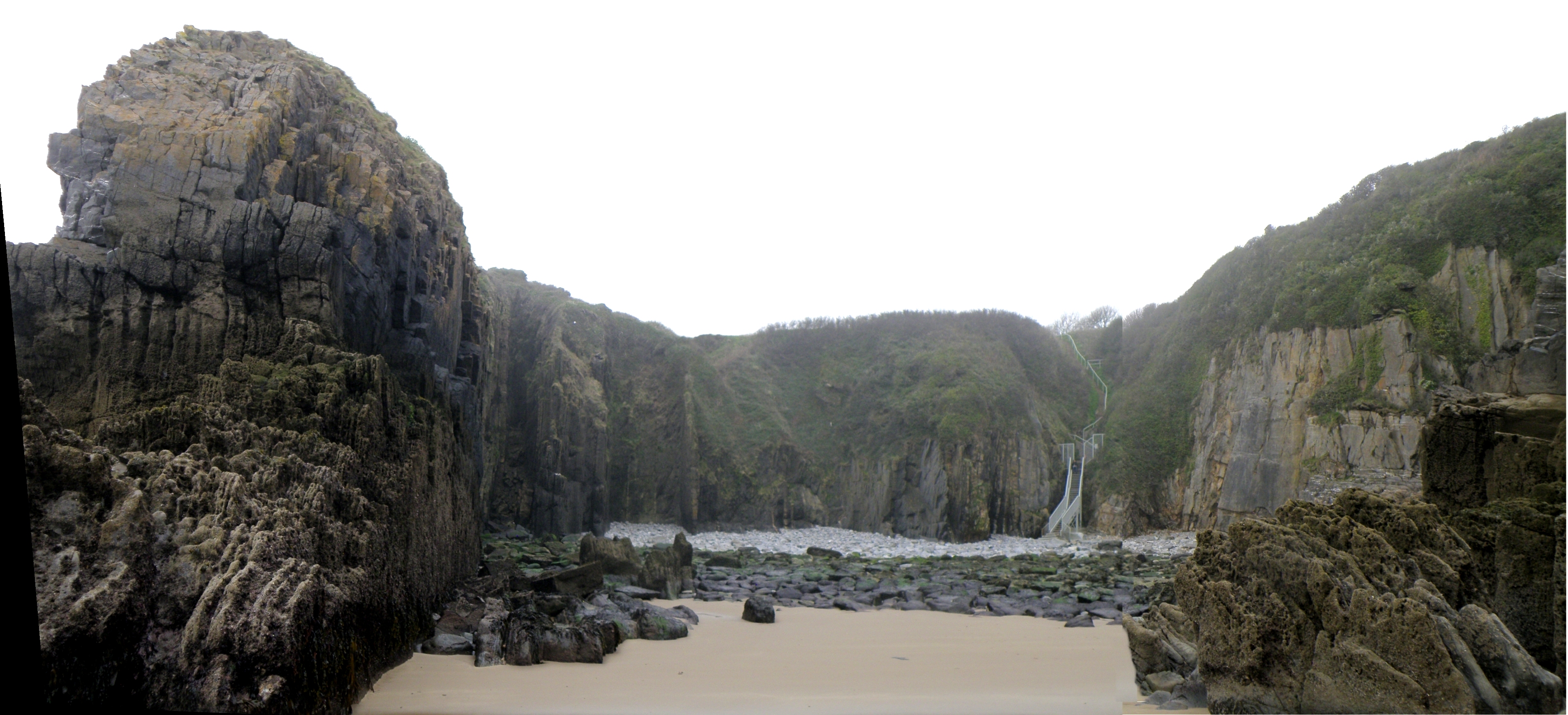
L1.
Now the tide has gone out, and we are going to walk along the beach
from the west cove to the middle cove, around
the headland formed by the Church Doors Limestone (left). Note the metal
steps by which we descended to the beach.
|
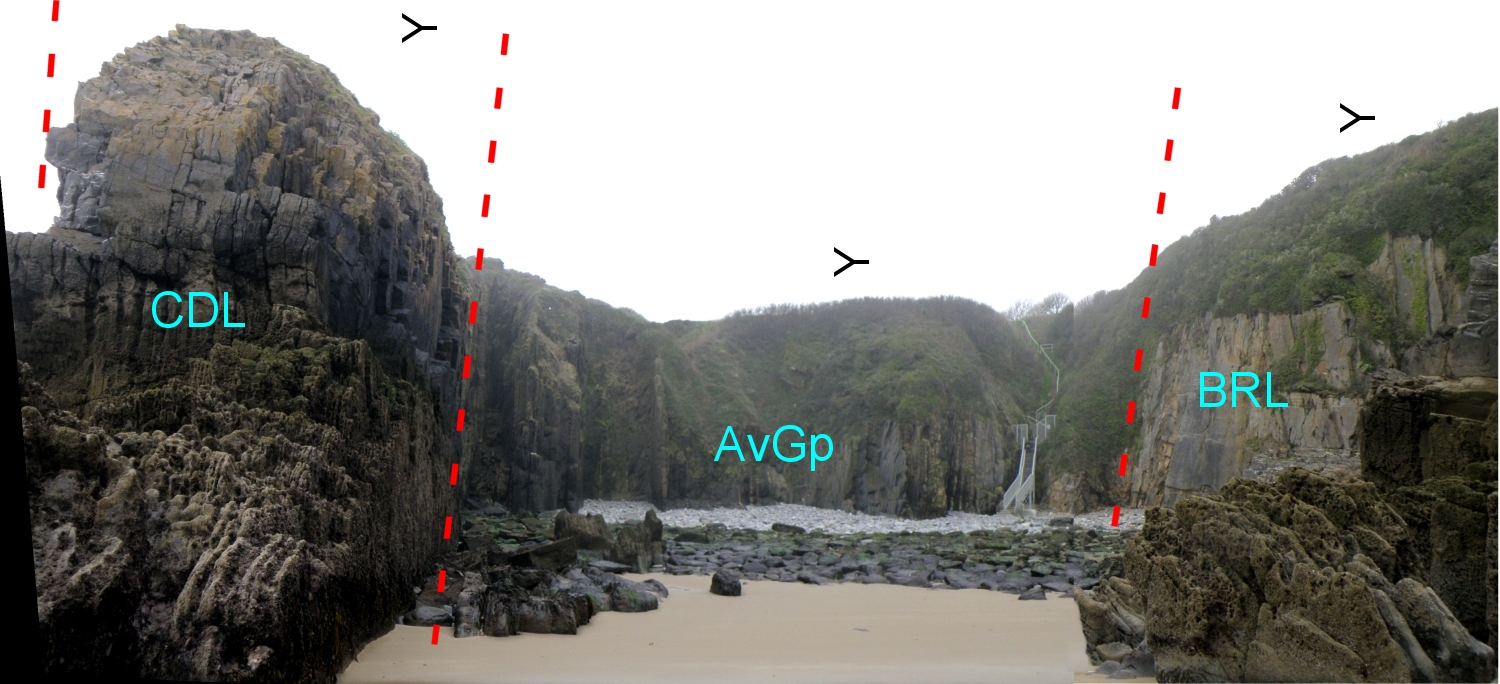
L2. Annotated view. Abbreviations as in photo A2. Beds are slightly overturned
and young to the right (north). |
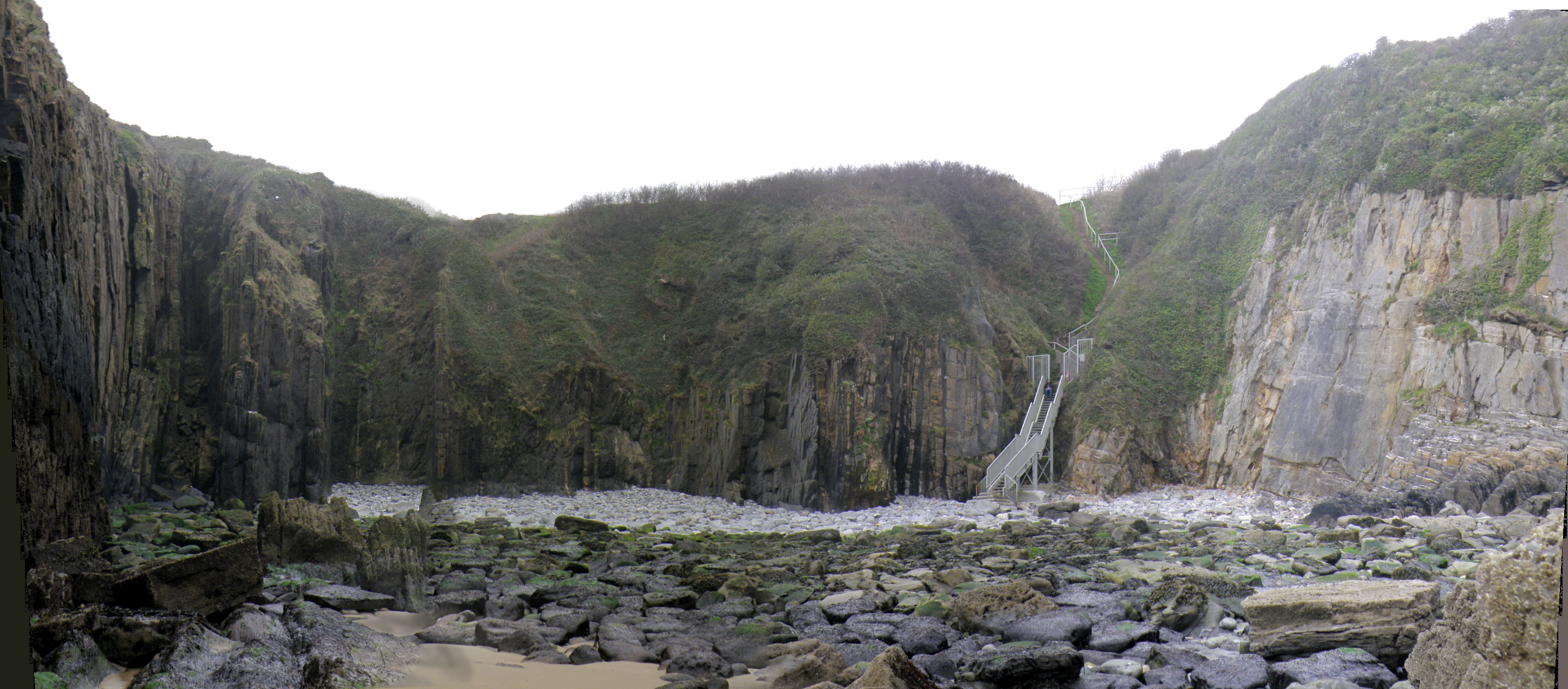
M1. A slightly closer view of the middle cove, showing more detail. |
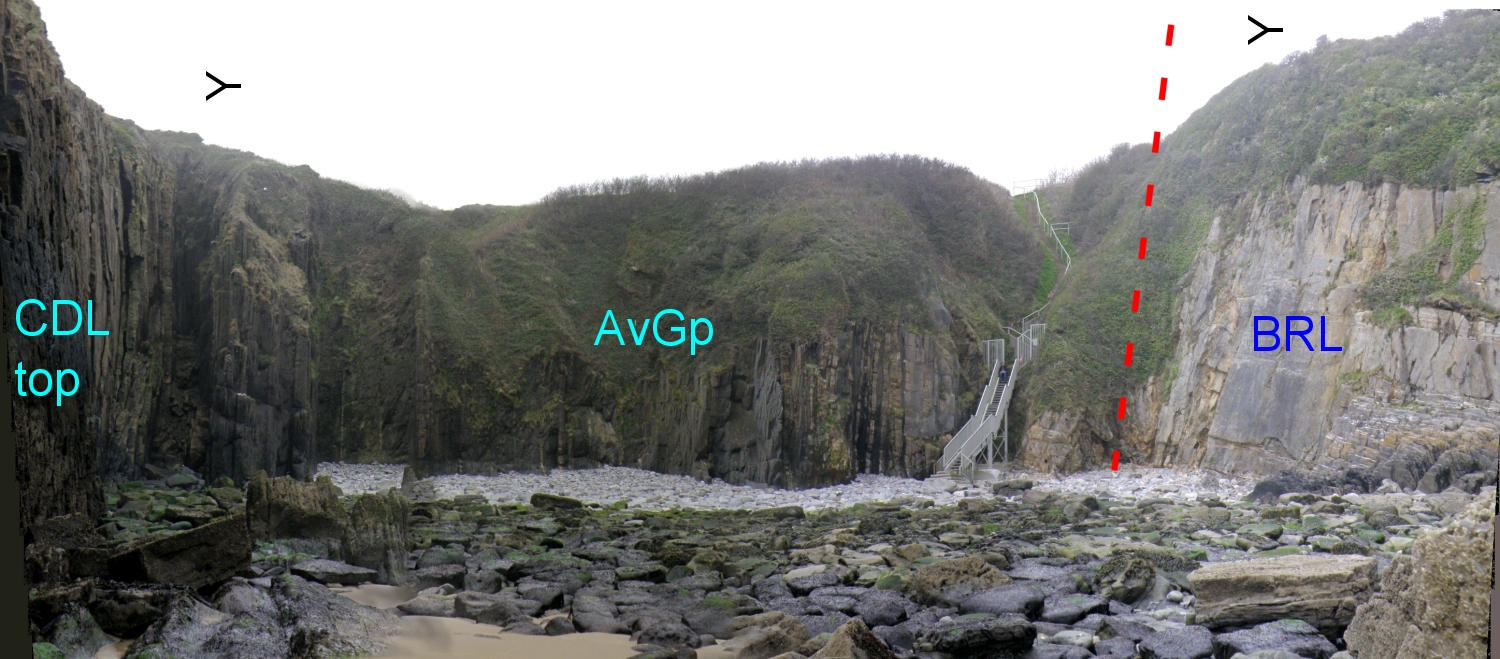
M2. Note the alternating lithologies in the AvGp. |
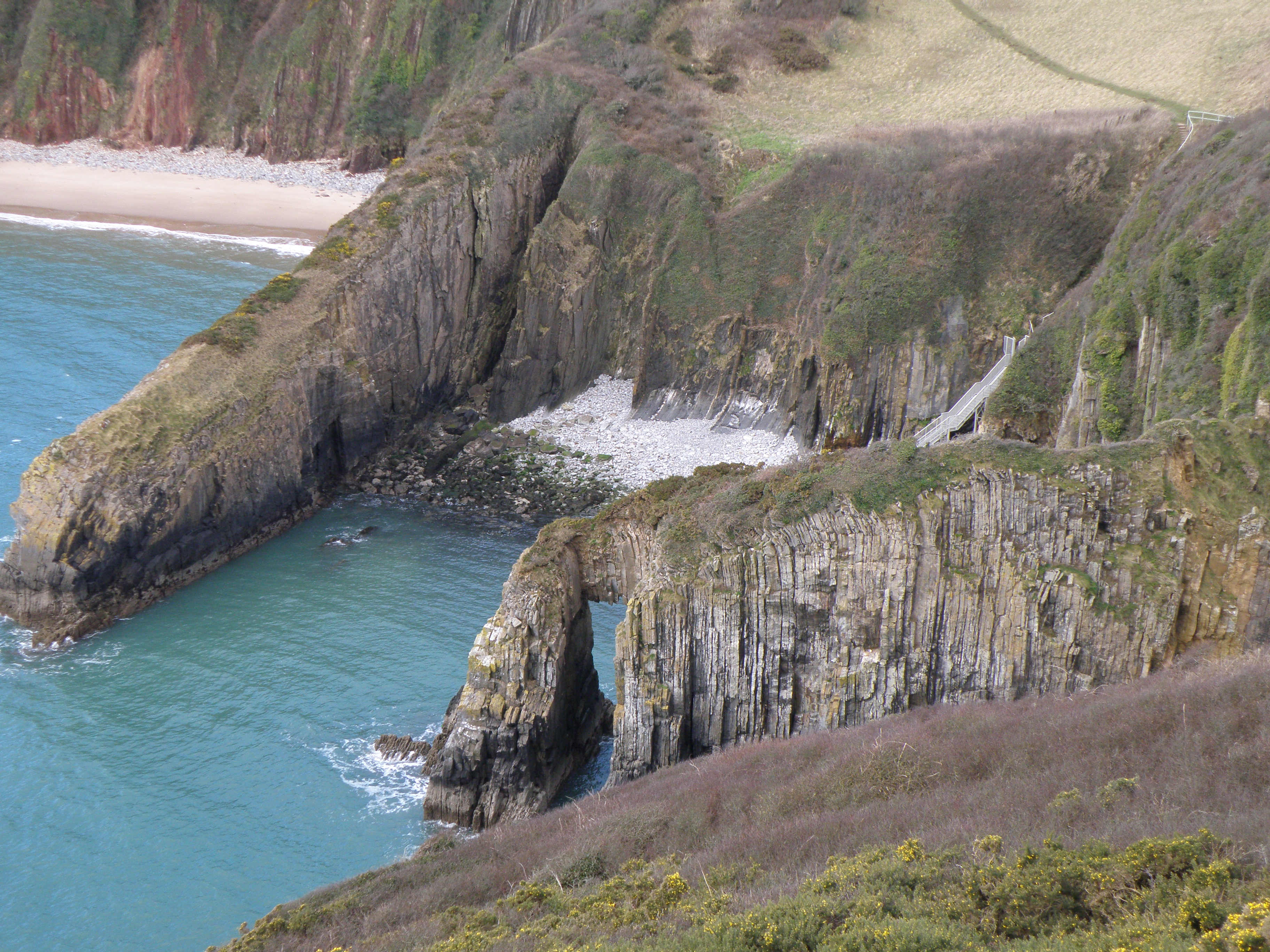
N. View SW from the coast path. The headland on the left is the Church Doors
Limestone (CDL). The headland with the natural arch is in the Black Rock
Limestone (BRL). The limestone is offset by steep minor faults. |
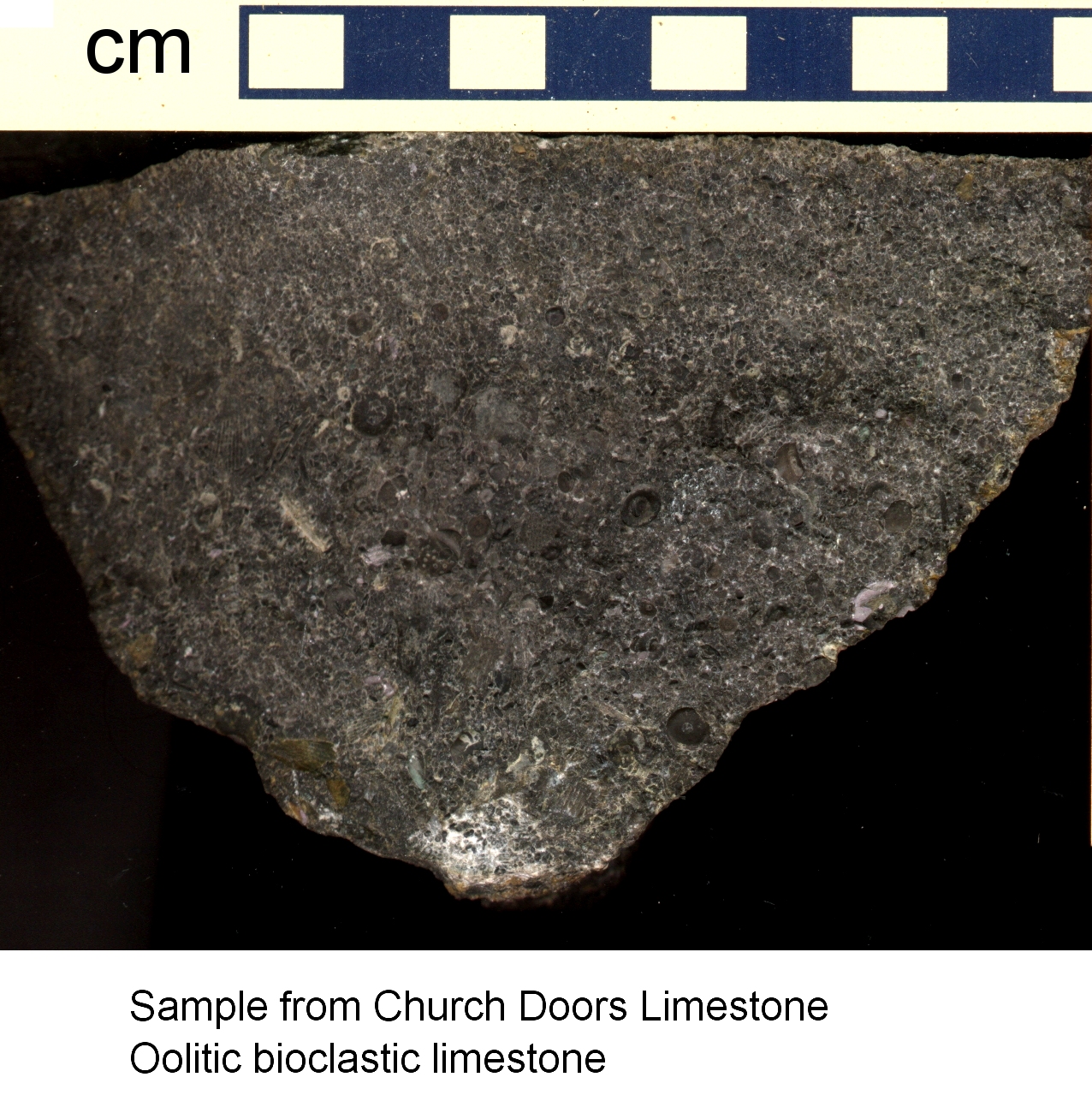
O. Rock sample - take a close look. In outcrop, ripple cross lamination
is seen. |
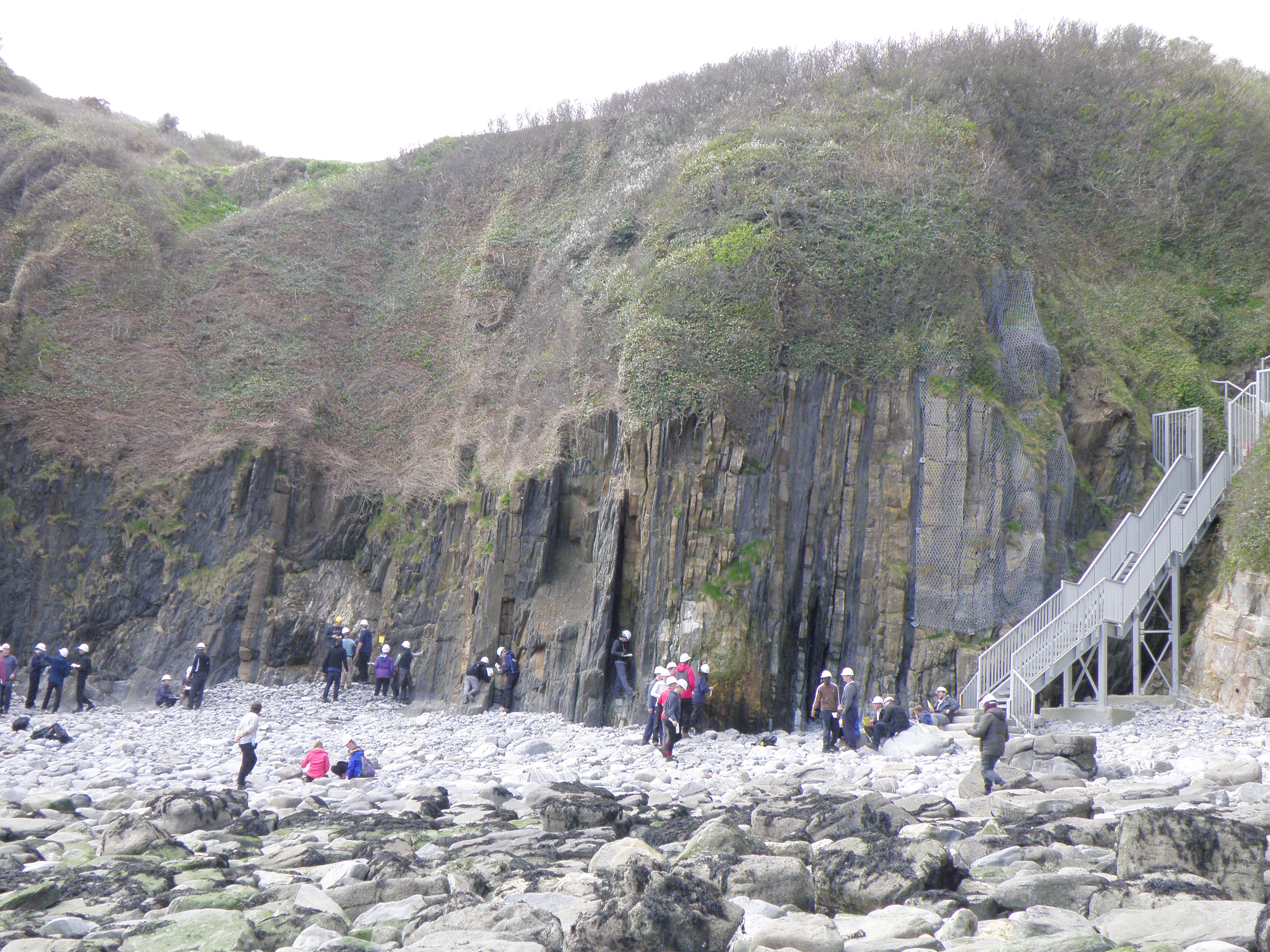
P. The Avon Group is on the left. The contact with the Black Rock Limestone
is near the steps.
Is it sharp or gradational?
Where exactly would you place the contact?
|
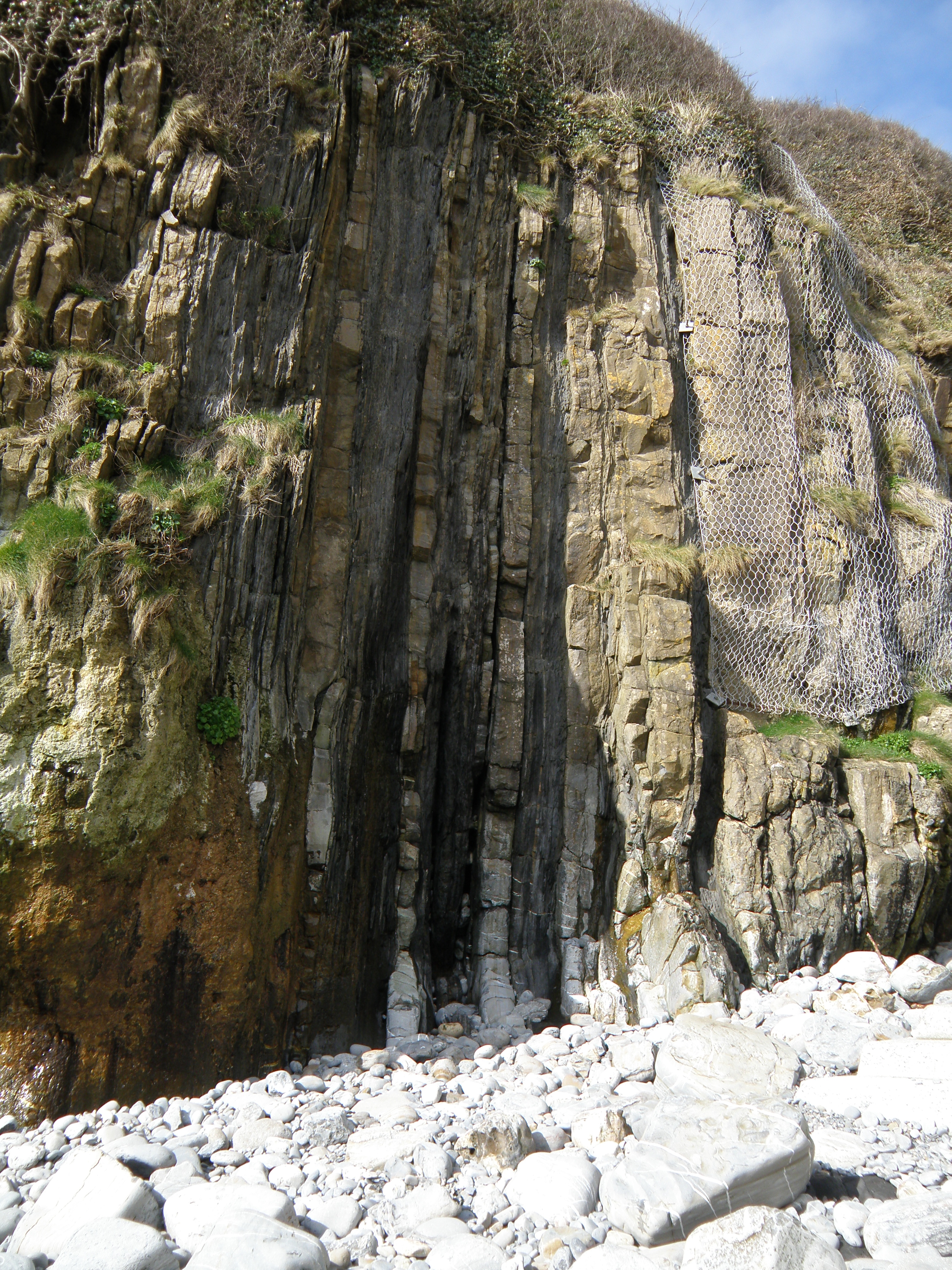
Q. Closer view of the alternating lithologies in the upper part of the
AvGp, just left of the steps. Younging is to the right. Mudstones weather
in; sandstones and impure limestones stand out. All lithologies react with
dilute HCl. Similar fossils are found to those in photos K1 to K8, and some
beds are bioturbated. |
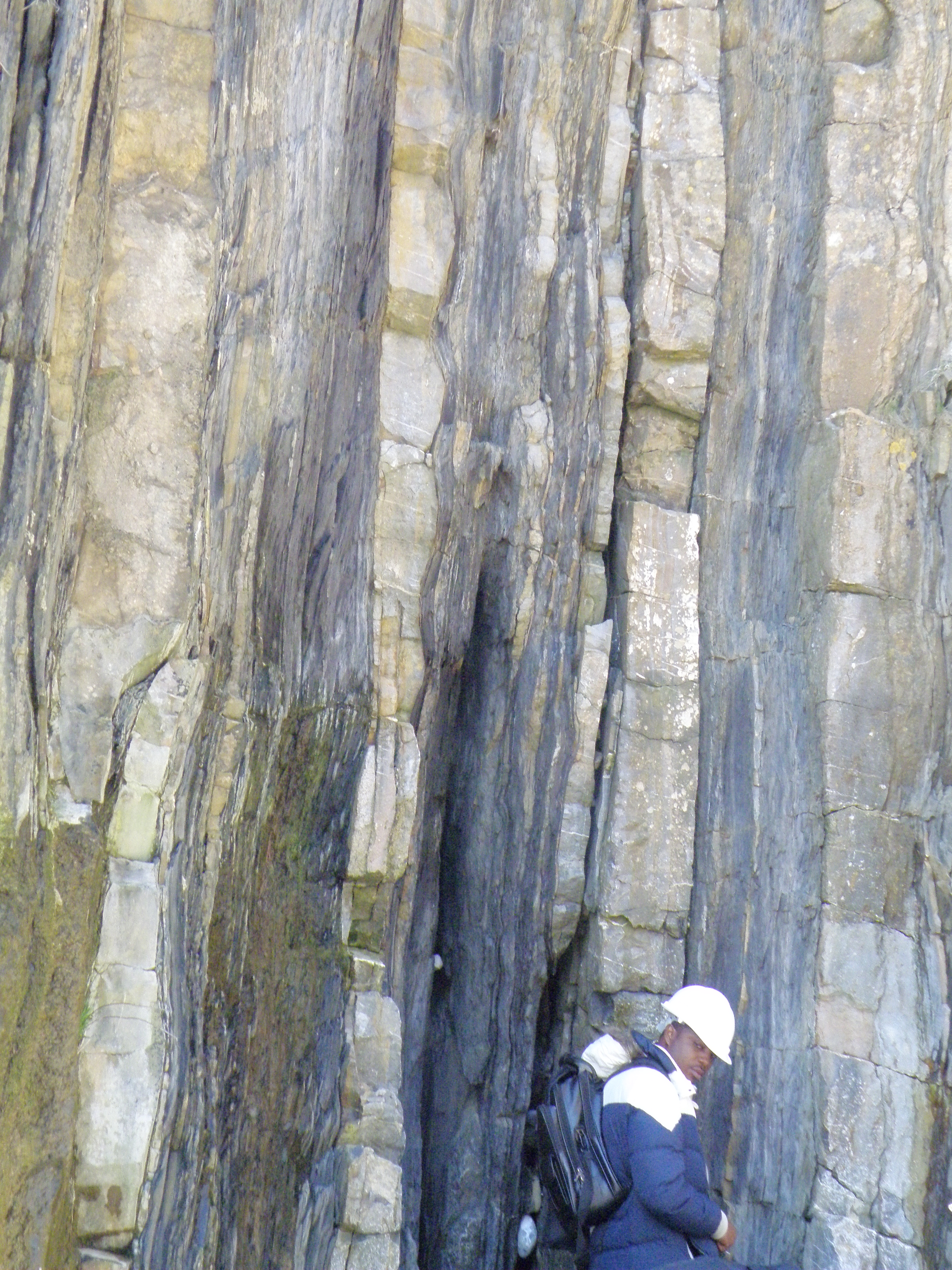
R. Closer view of the beds in photo Q. |
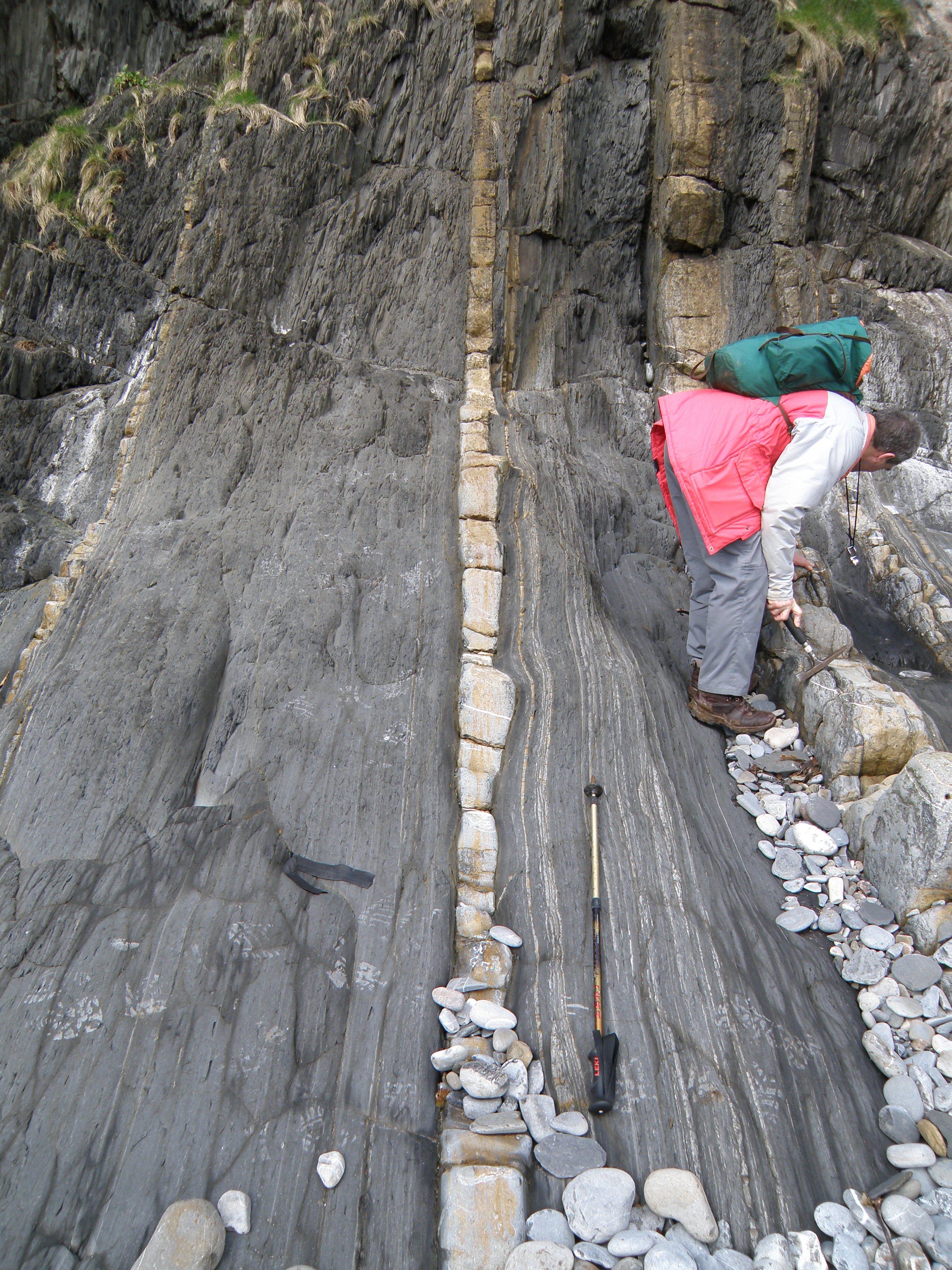
S. Calcareous mudstones with thin calcareous sandstone beds which stand
out. Younging is to the right. What can you say about the geometry of the
bed immediately behind the geologist? Note particularly the basal and top
contacts. |
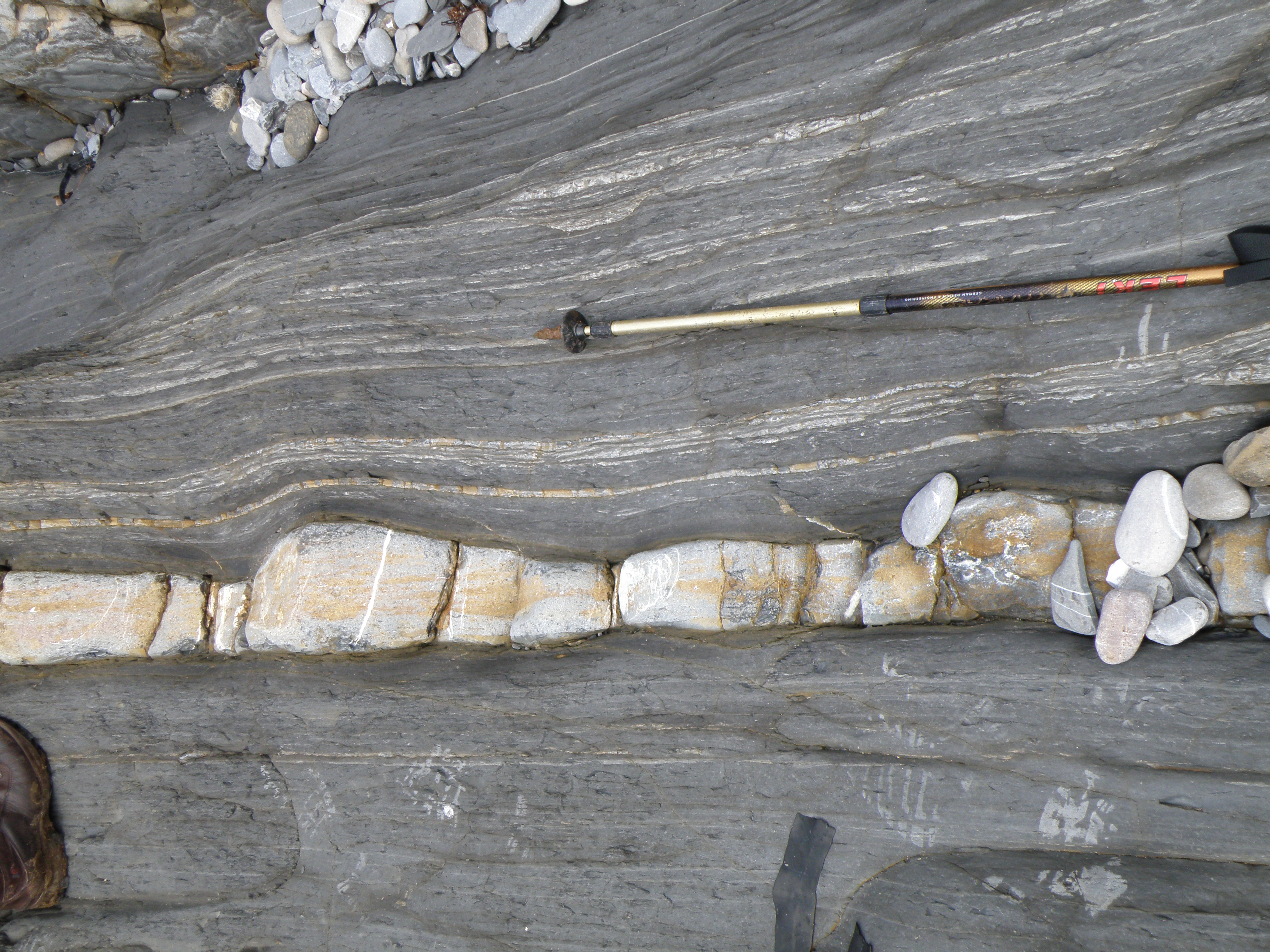
T. Closer view of the bed seen in S. The contacts should be clearer to
see.
What does the alternation
of lithologies tell us about changing conditions?
|
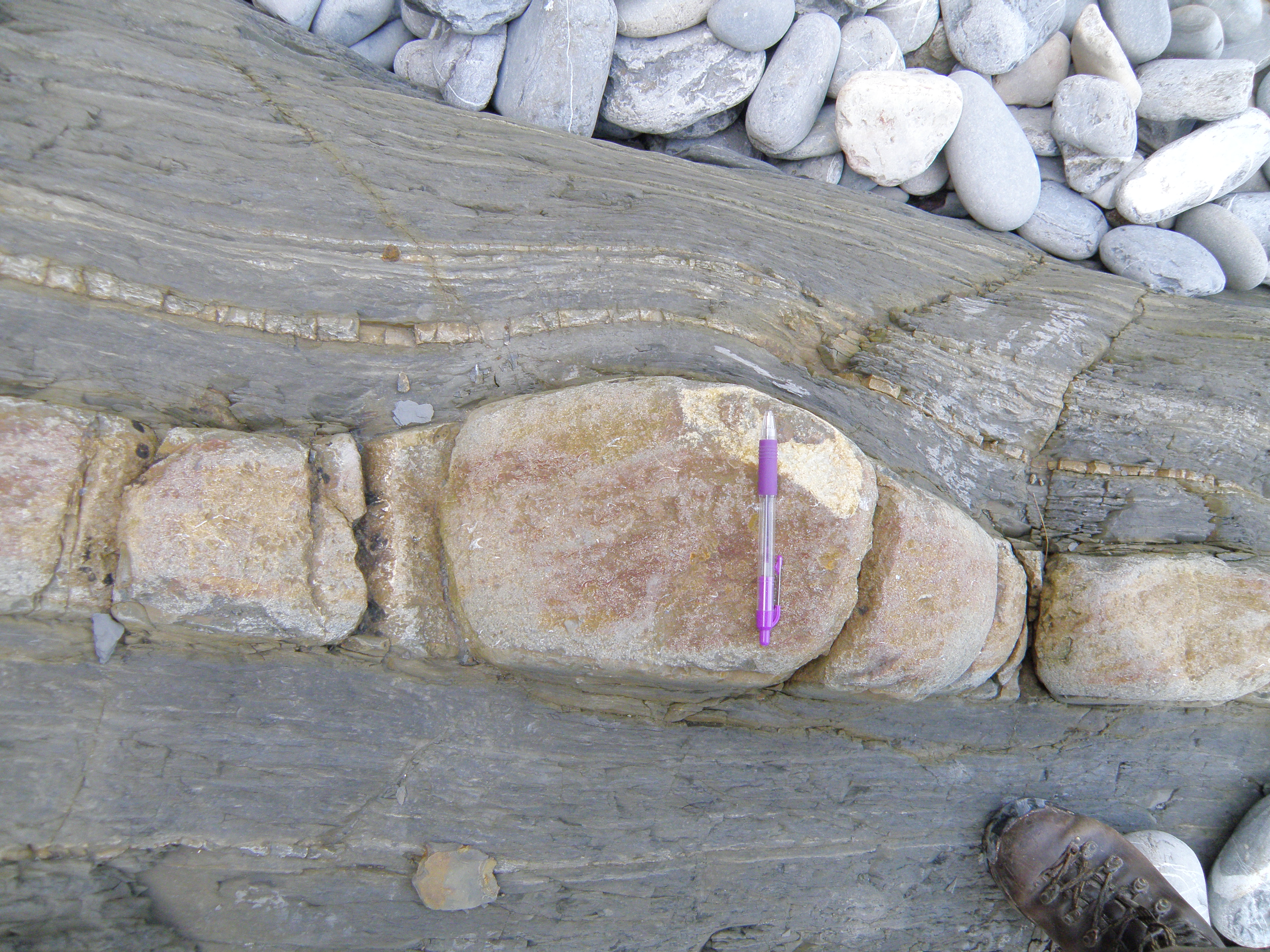
U. Close-up of T. We can see the contacts, and a hint of internal structures
within the bed. |
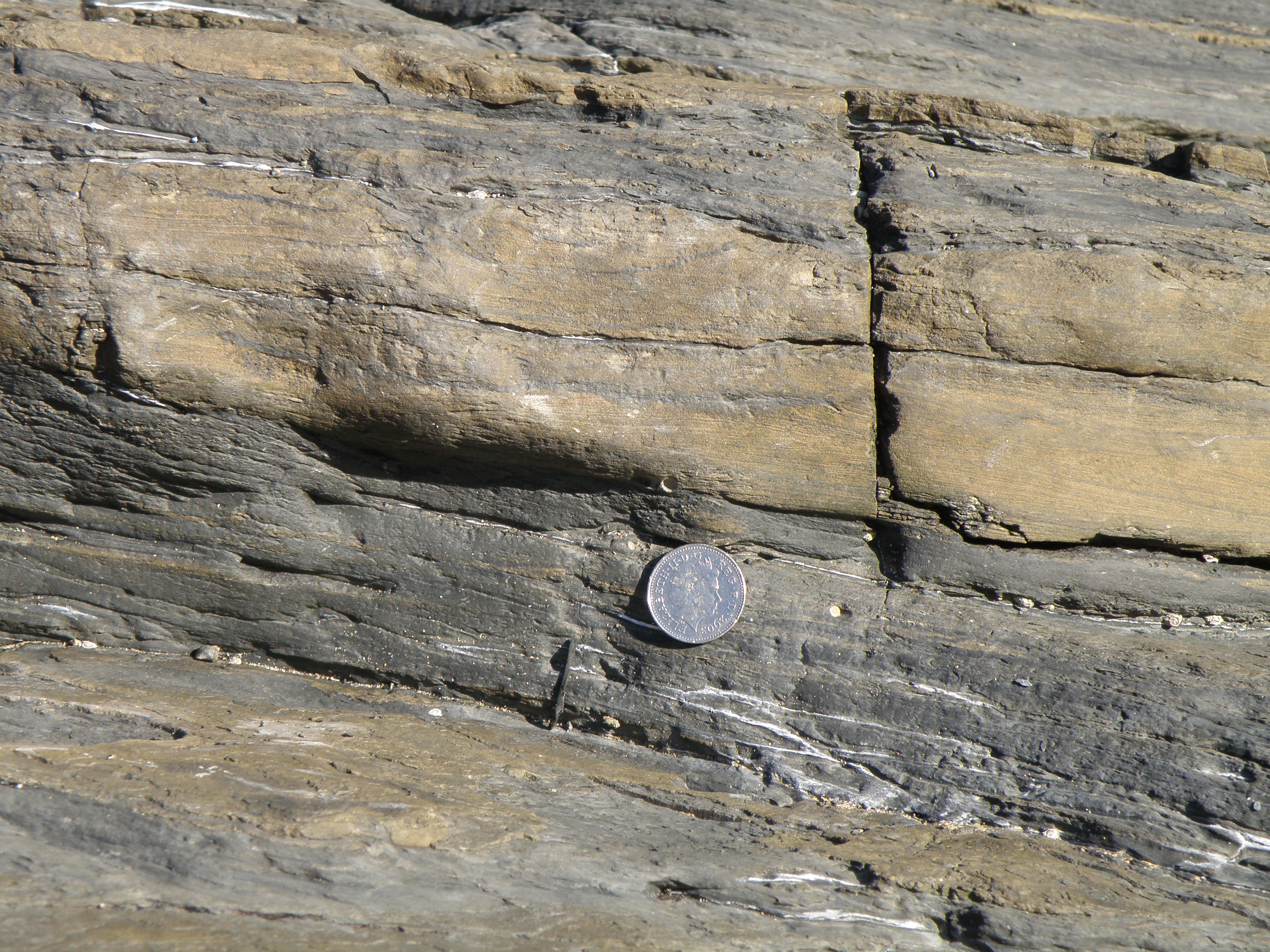
V. The brown bed above the coin is similar to those seen in photos S to
U, but the internal structures are more obvious. |
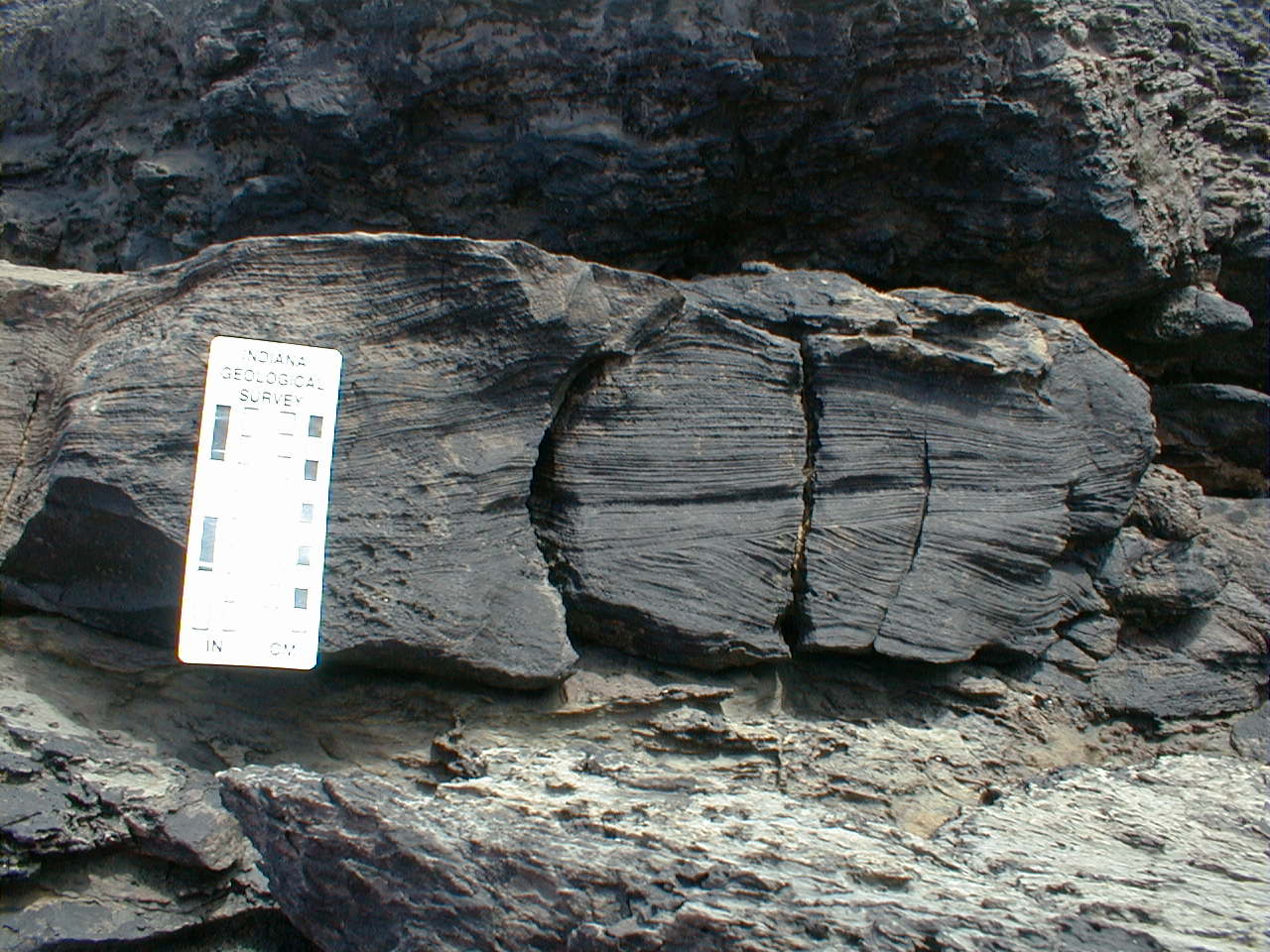
W. Another similar
bed - describe and identify the sedimentary structures, looking particularly
at internal contacts. What is this structure? What does it tell us about
processes and environments. Don't forget to use the reference section
in the Field Guide, and the recommended texts.
|
|
Black Rock Limestone (BRL)
We'll study this briefly, as we'll
be looking at a detailed section in the Pembroke Limestone Group (PLG) tomorrow.
|
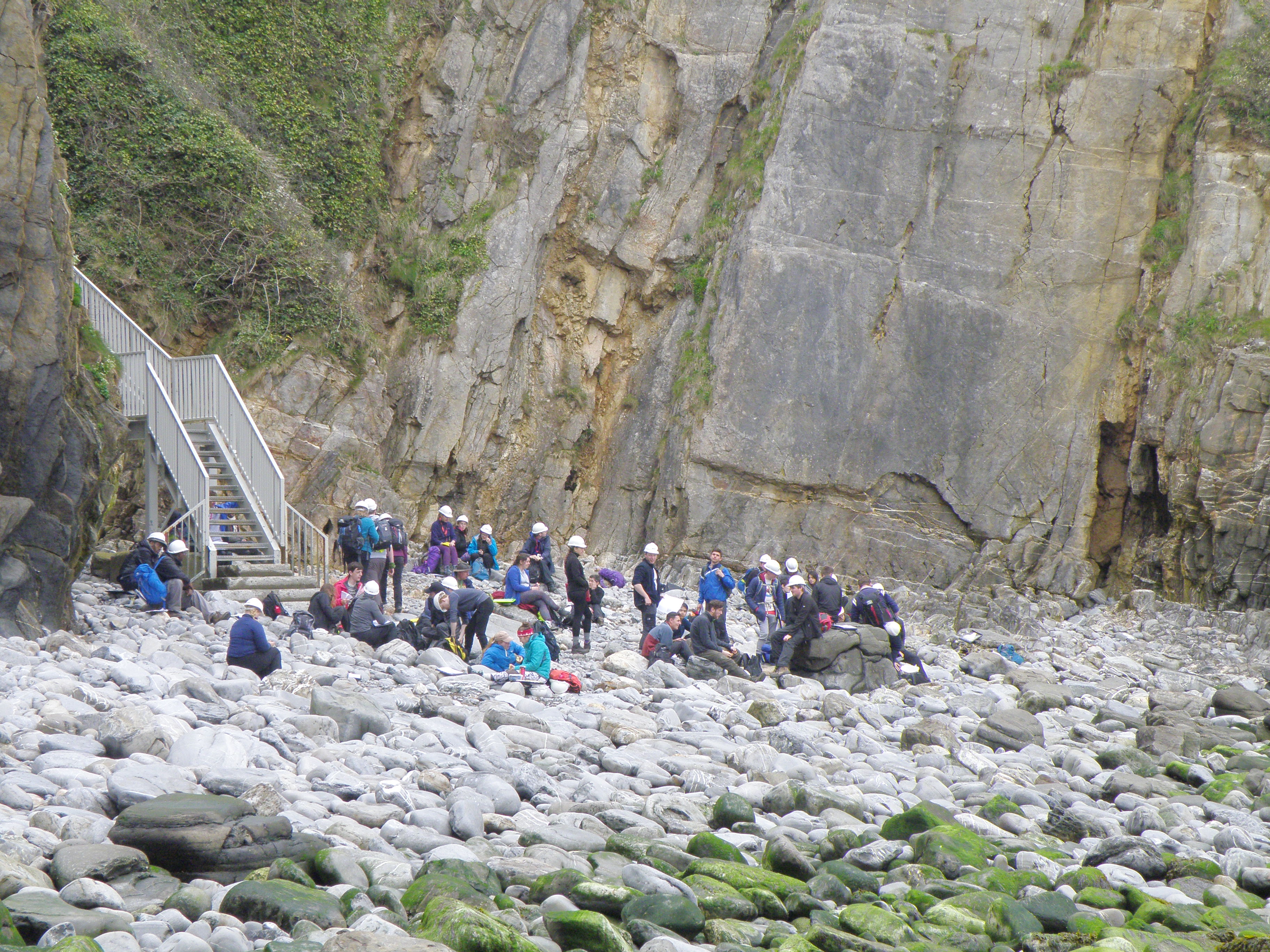
X. The section in the BRL starts near the steps and youngs to the right
(north). Dip is to the left, so the beds are slightly overturned. Some
bedding planes are covered in the trace fossil Thalassinoides.
|
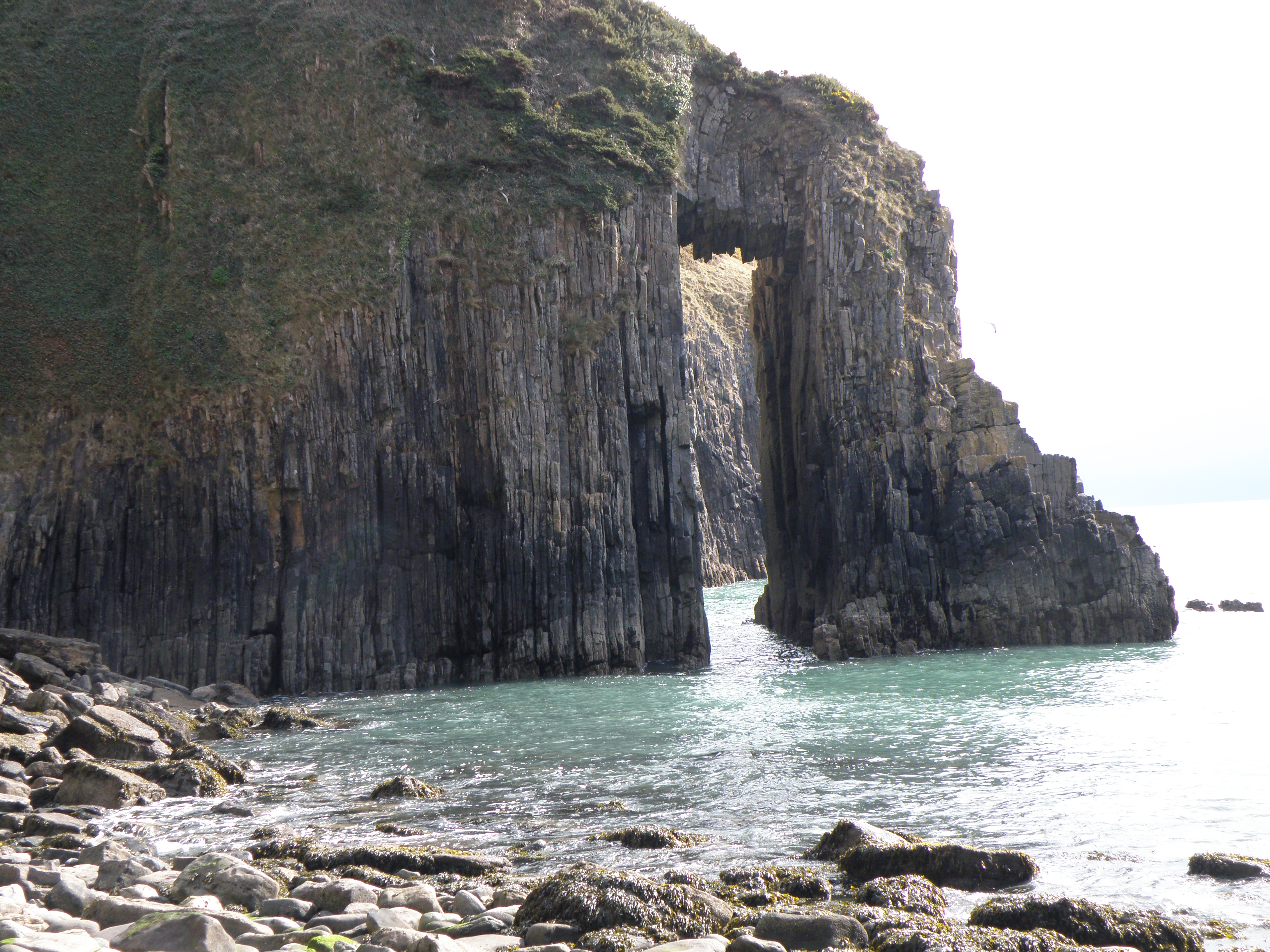
Y. Natural arch eroded in near-vertical BRL on the east side of the middle
cove. Beds young to the left (north).
|
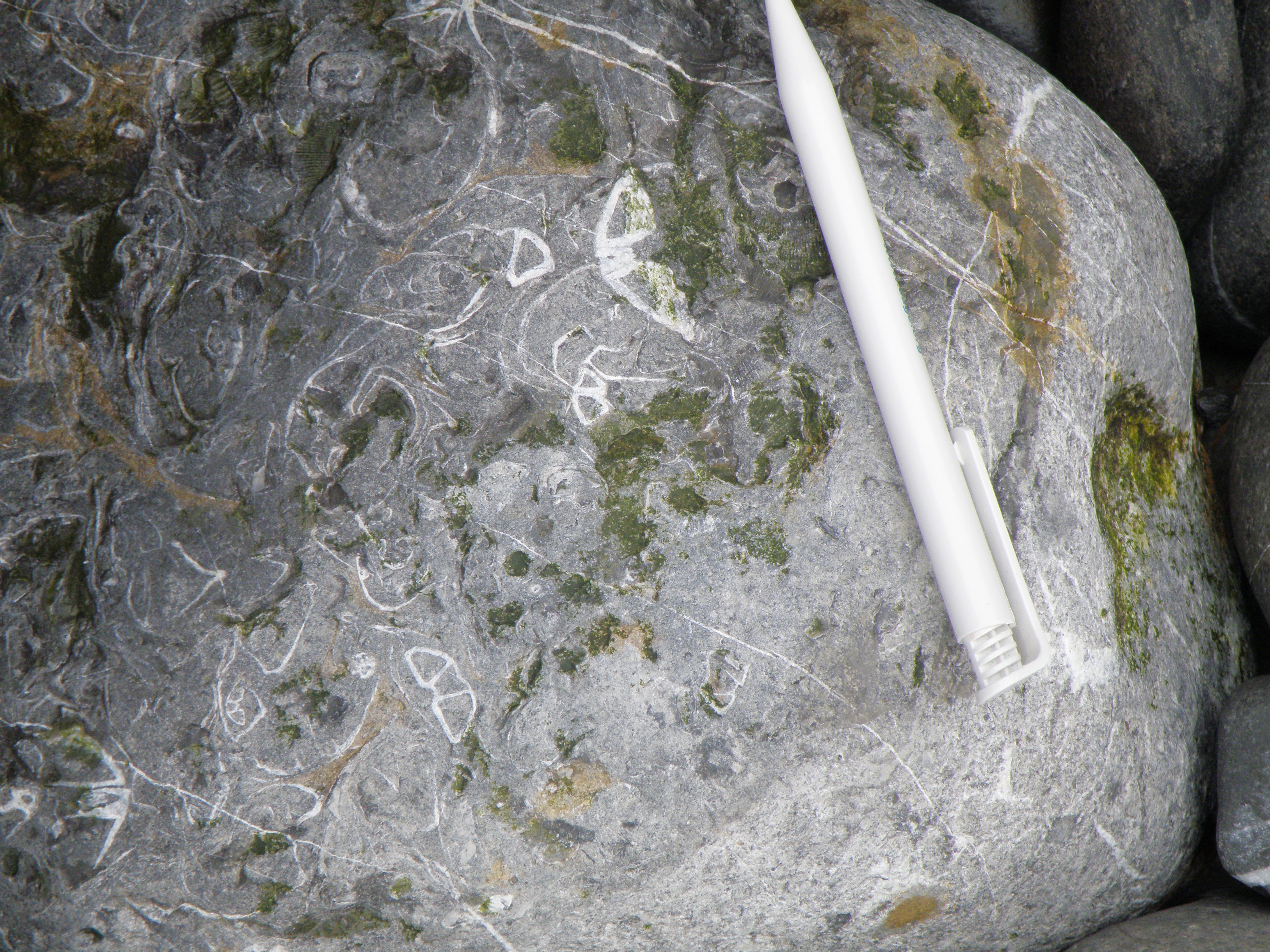
Z. Close-up of a BRL outcrop. Which group of fossils do these cross sections
belong to? |

Just for fun...
- Let's learn a bit about Welsh
place names: a lot of places start with Llan, or Aber for example: here's
a list
of such terms.
- If you want to go a bit further
and learn some of the language, beginners
can start here.
- Today's recipe: a delicious traditional
Welsh soup or stew called Cawl
- just the job after a bracing day on the coast.
- Local
Beer of the Day

End of Day 2
Make sure you've completed all the
work for this locality. That's all our outcrops for today. Now we can climb
back up the steps, catch our breath and enjoy the view from the cliff top, where
we'll meet for today's picnic and Q & A session in Blackboard Collaborate
at 5pm today (only available if you're a University of Derby student doing this
field trip in real time on Tuesday 28 April, 2020!).

This page is maintained
by Roger Suthren. Last updated
29 April, 2020 1:32 PM
. All images © Roger Suthren unless otherwise stated. Images may be re-used
for non-commercial purposes.
![]()
![]()
![]()